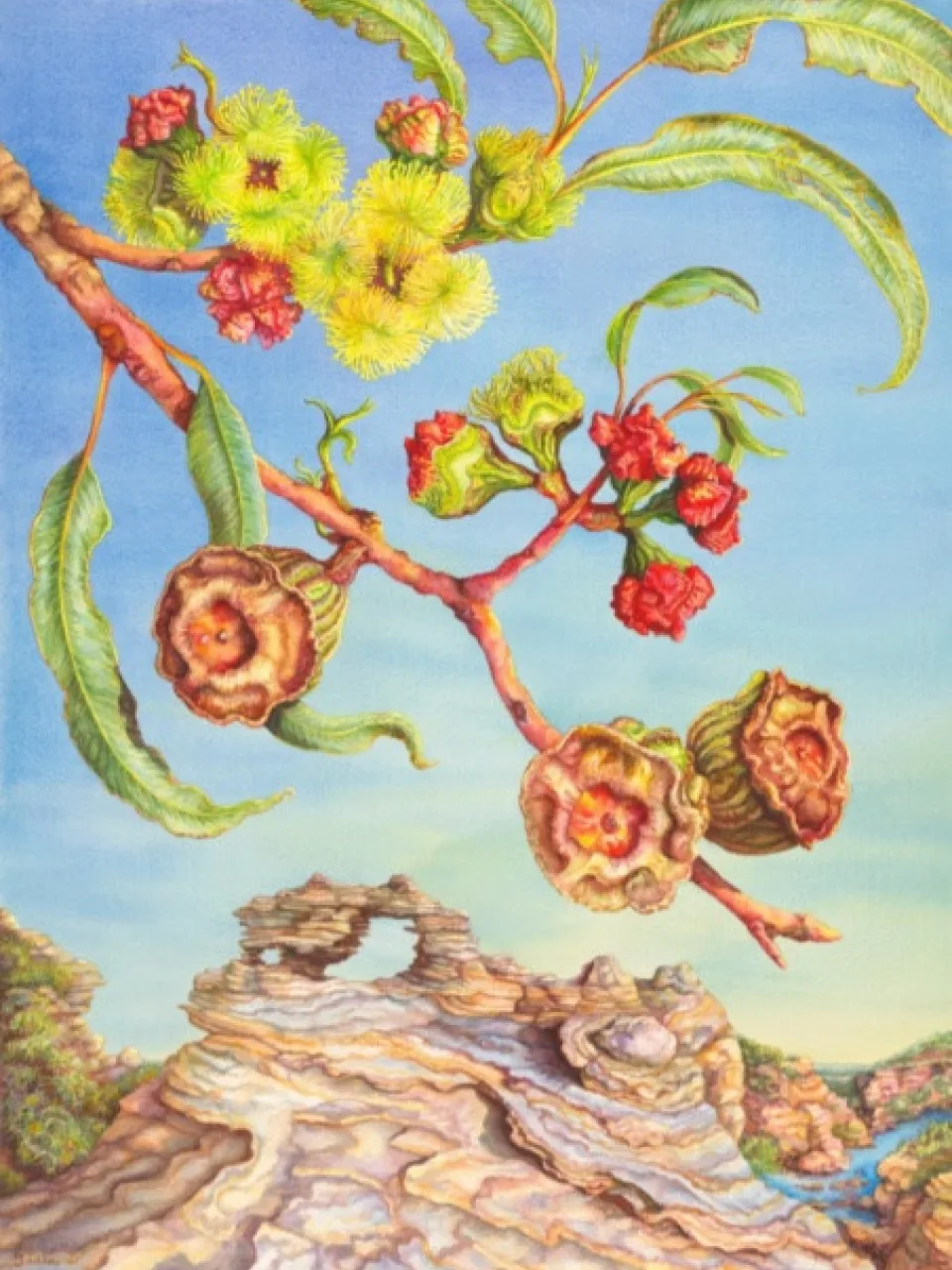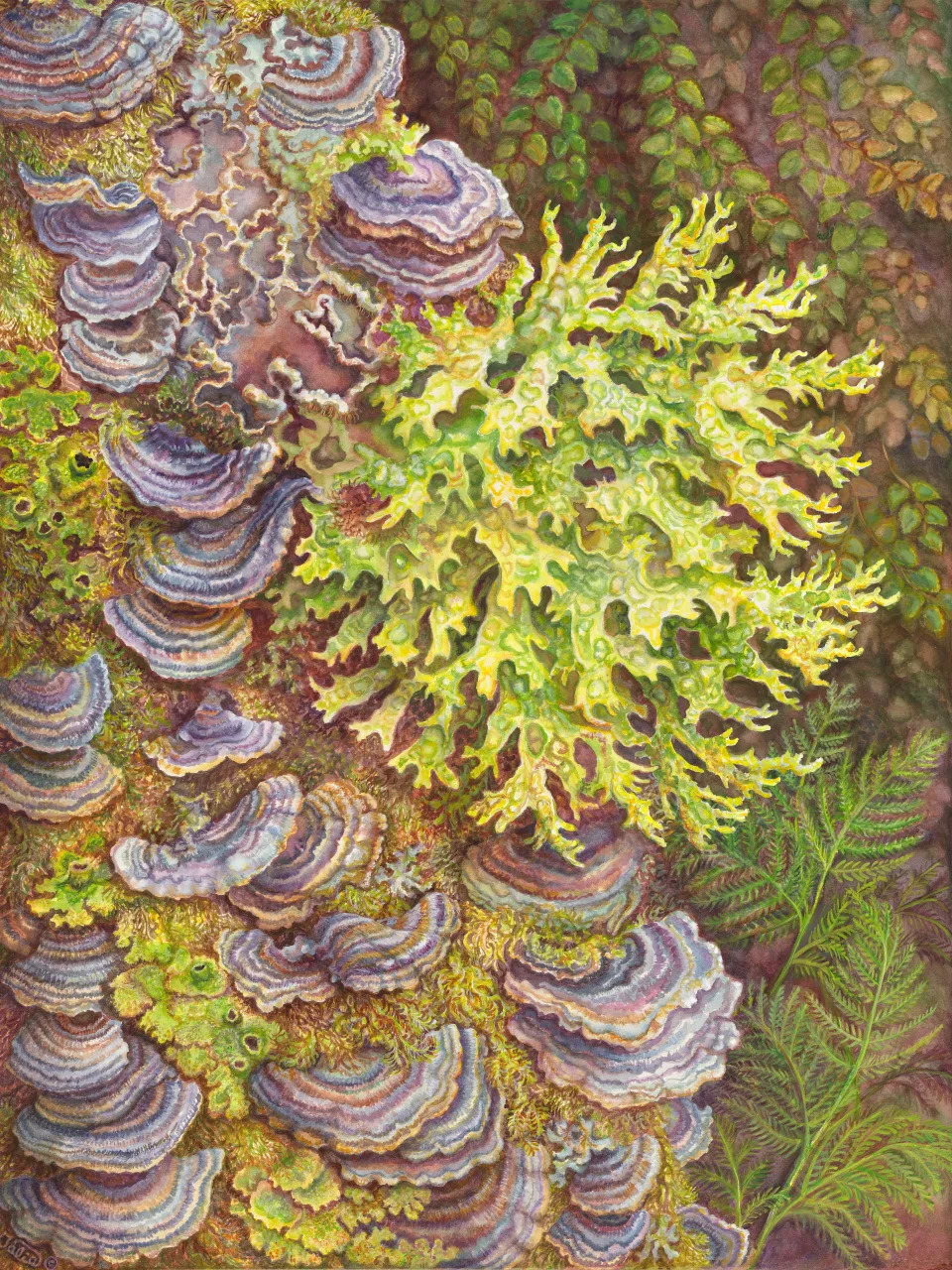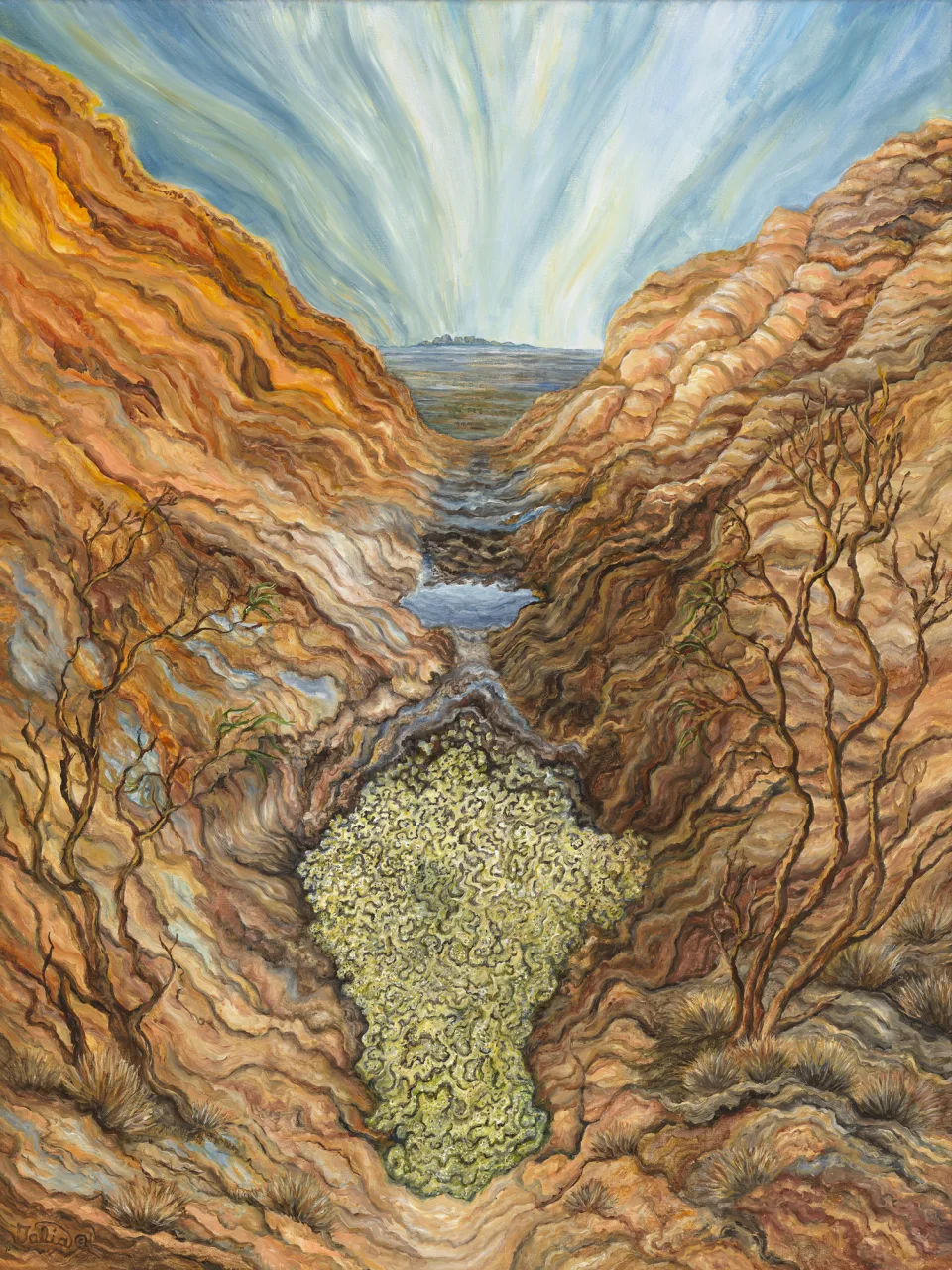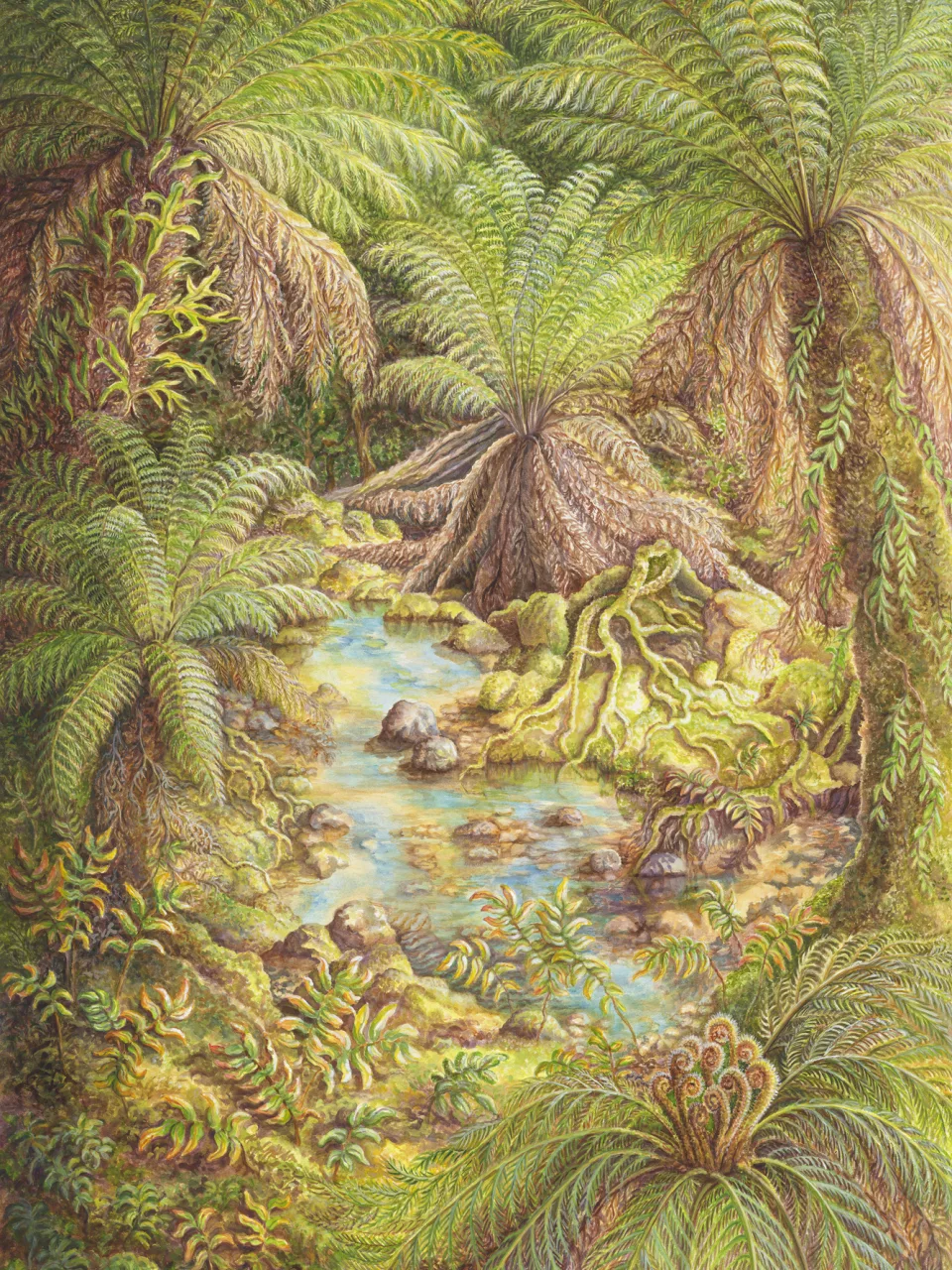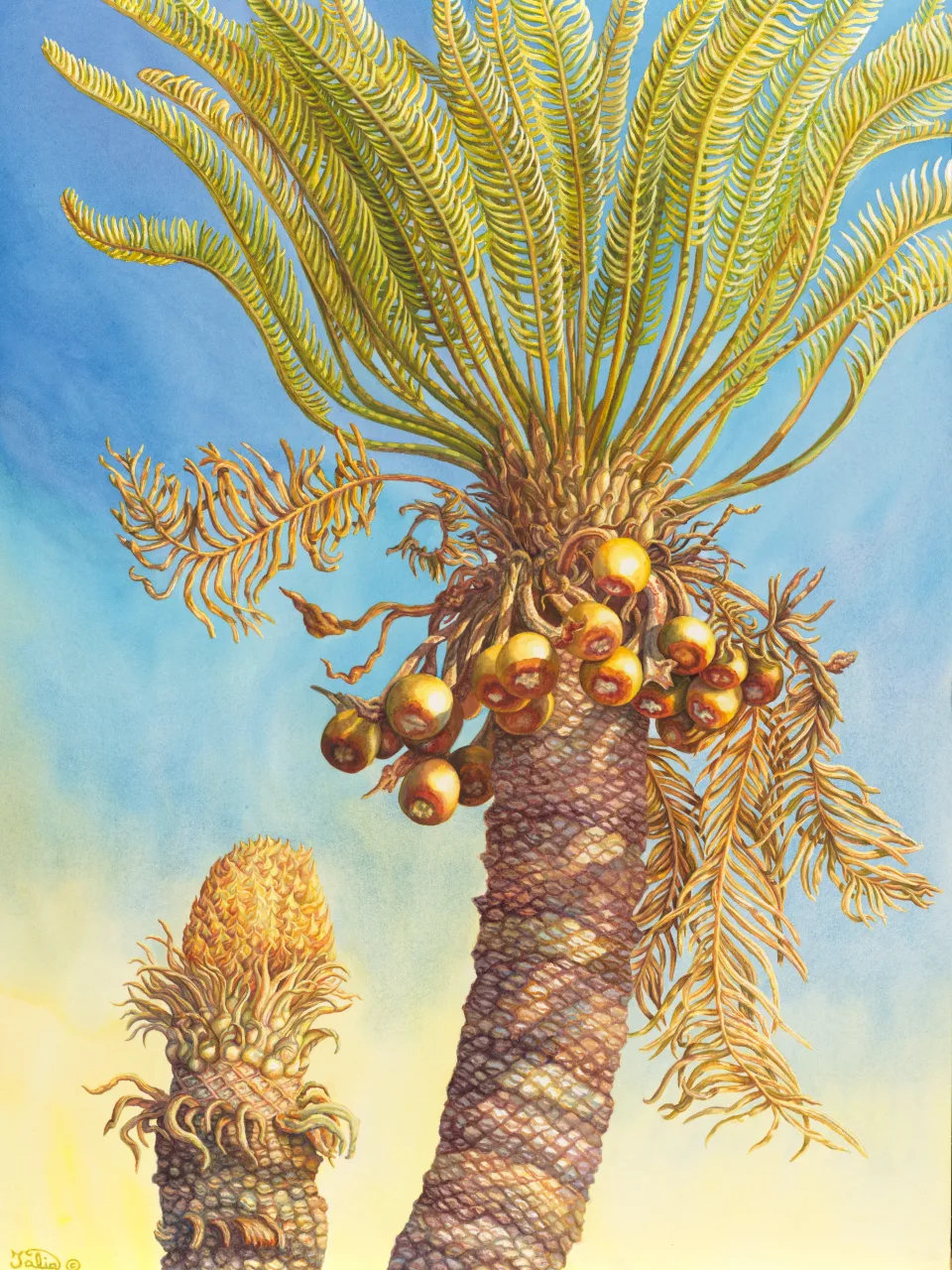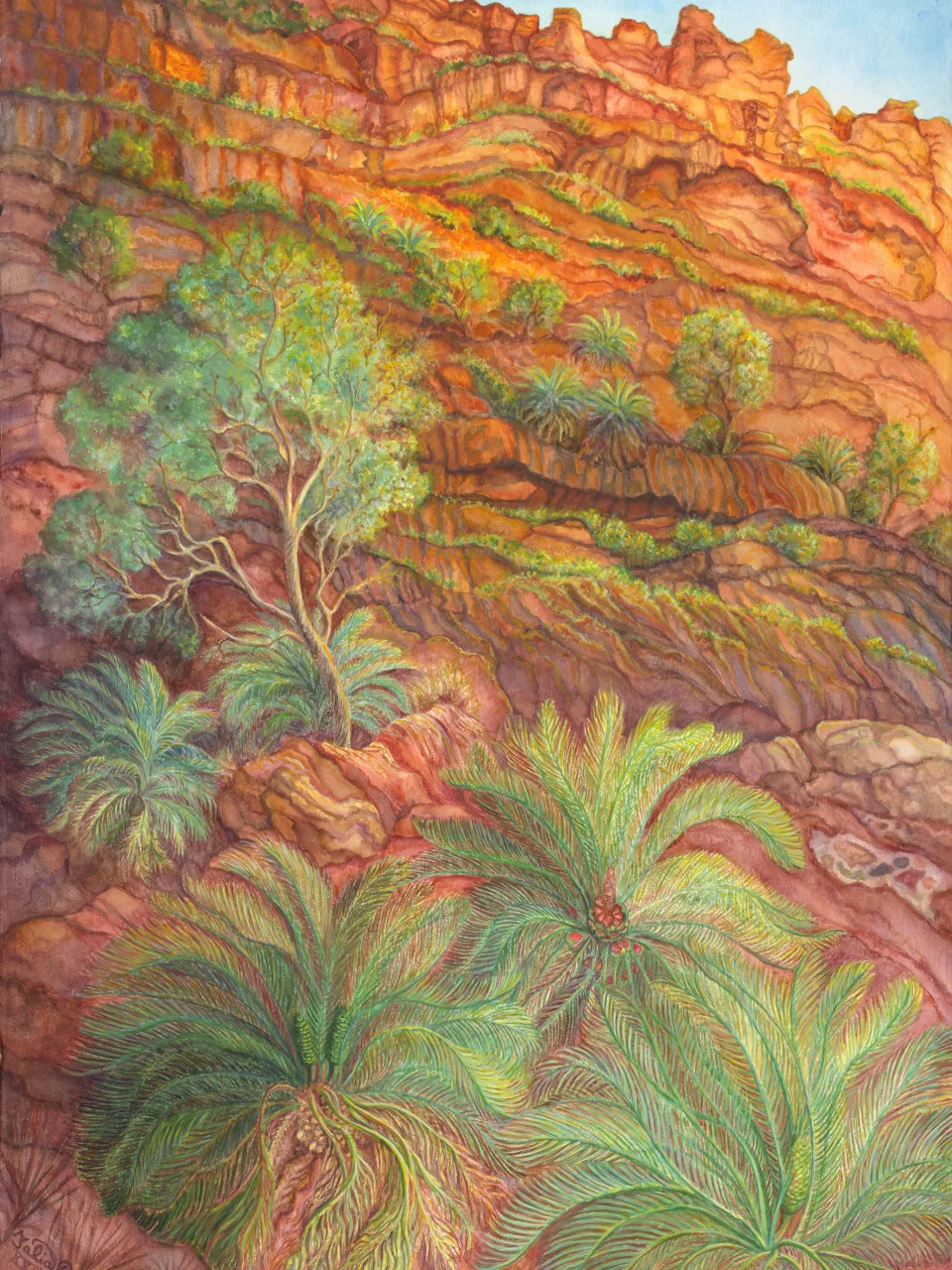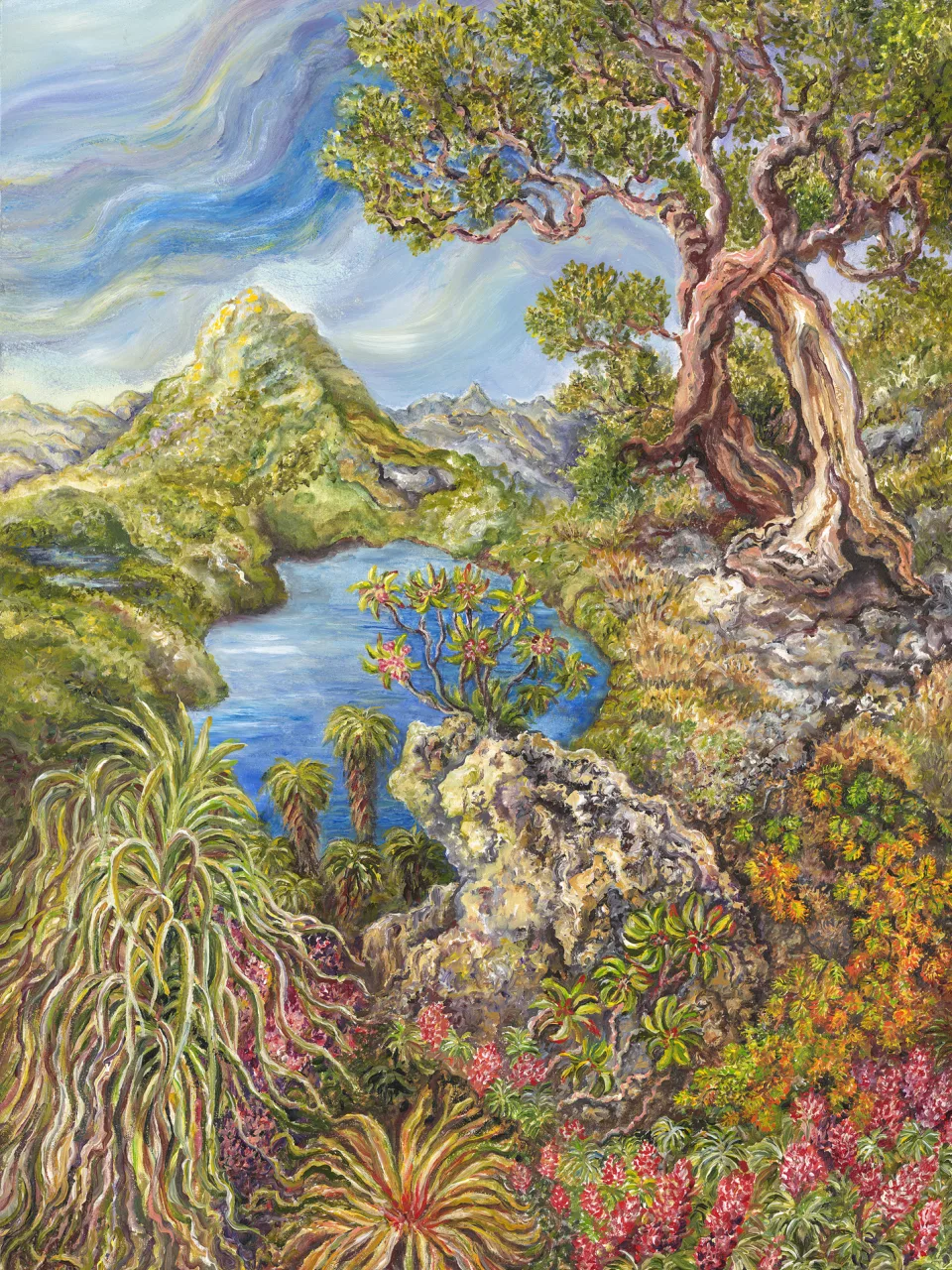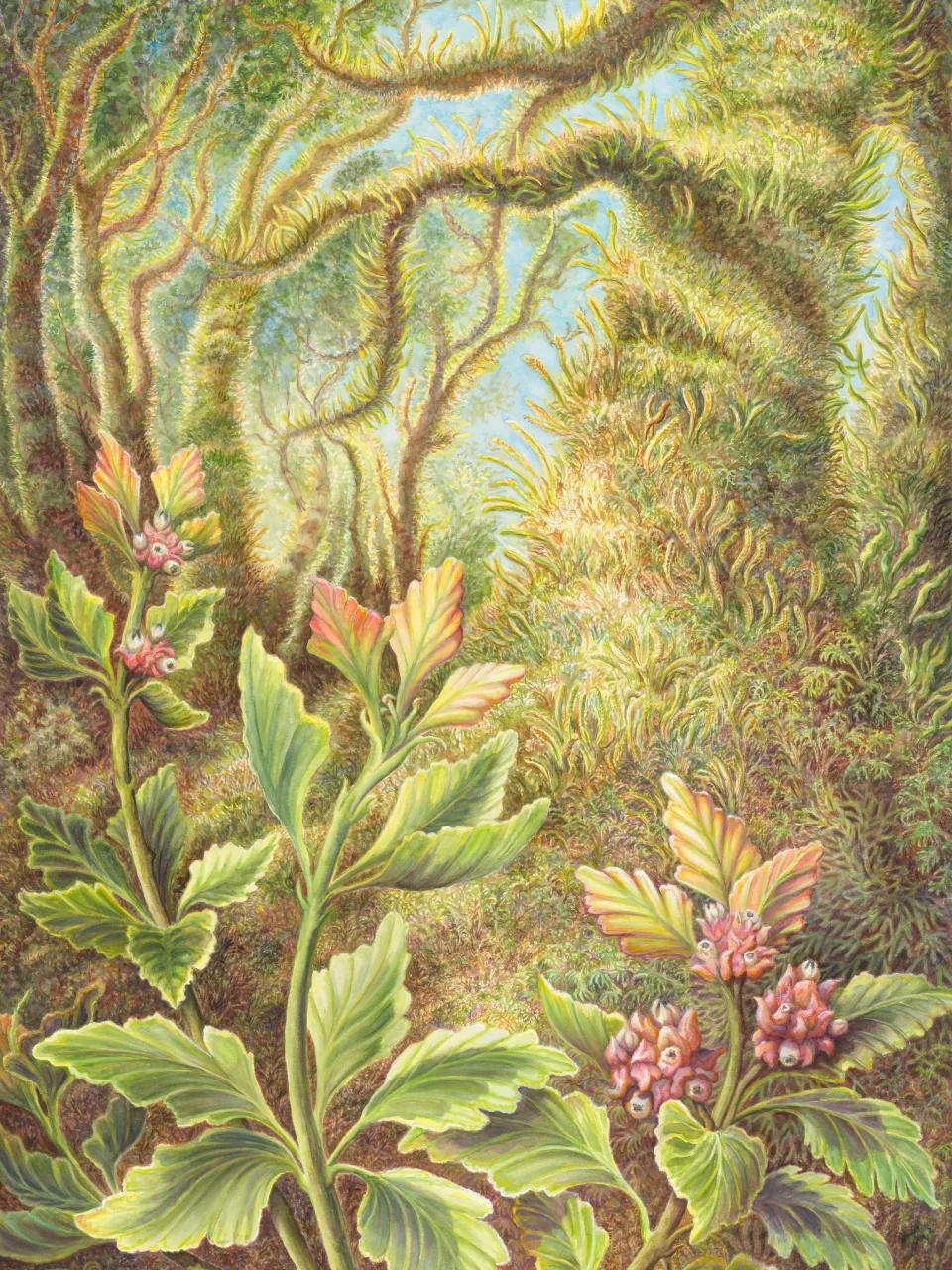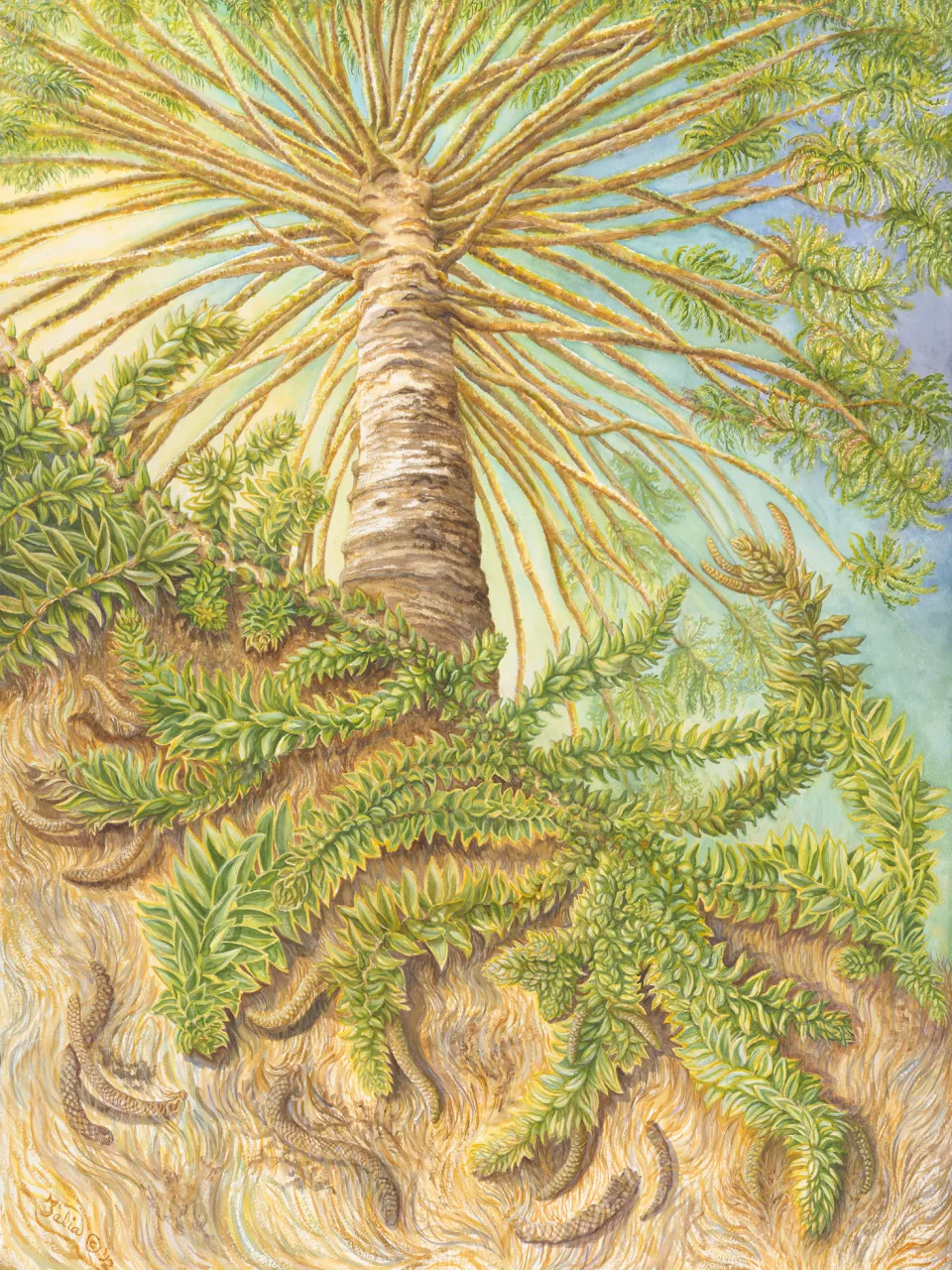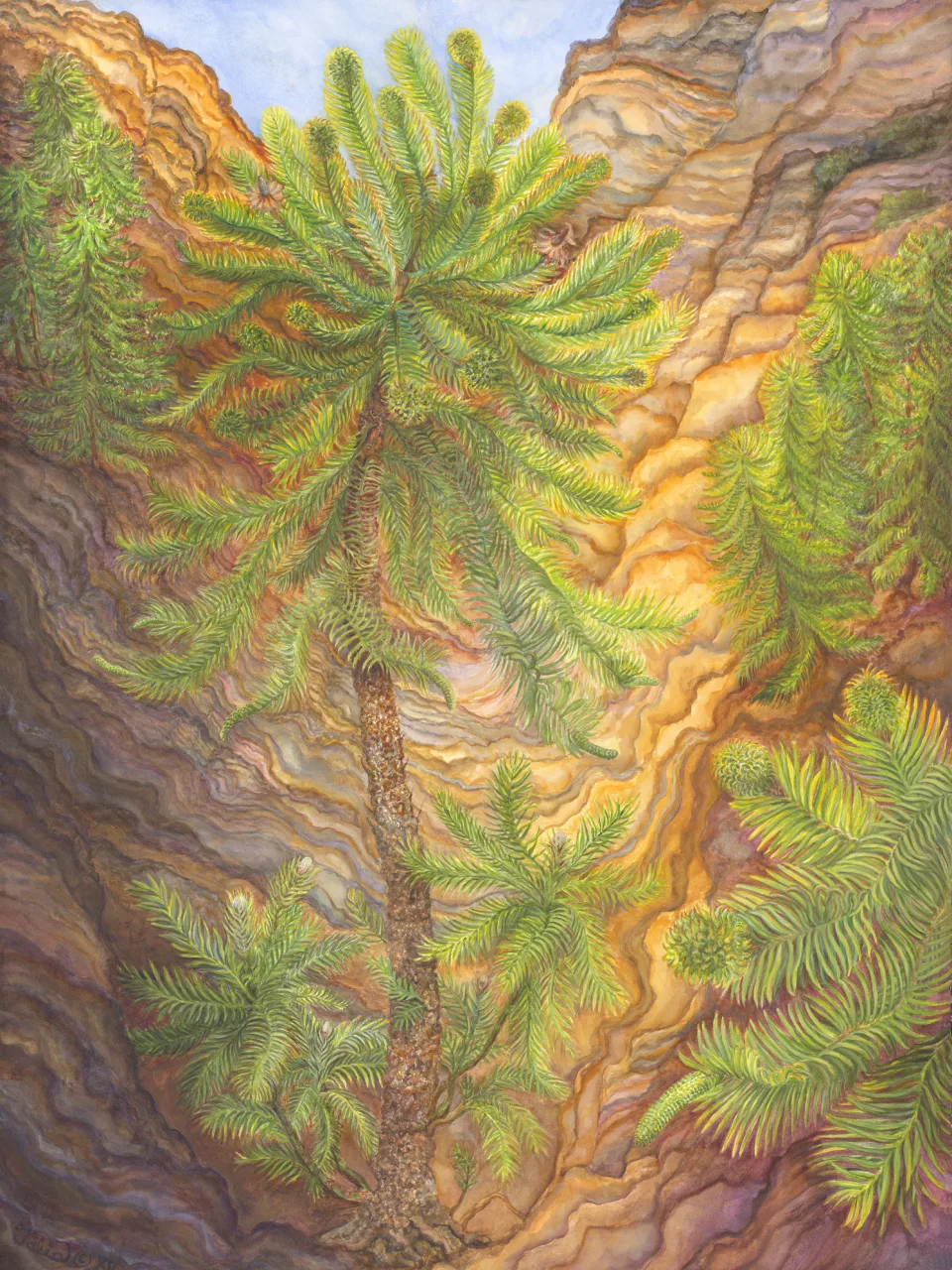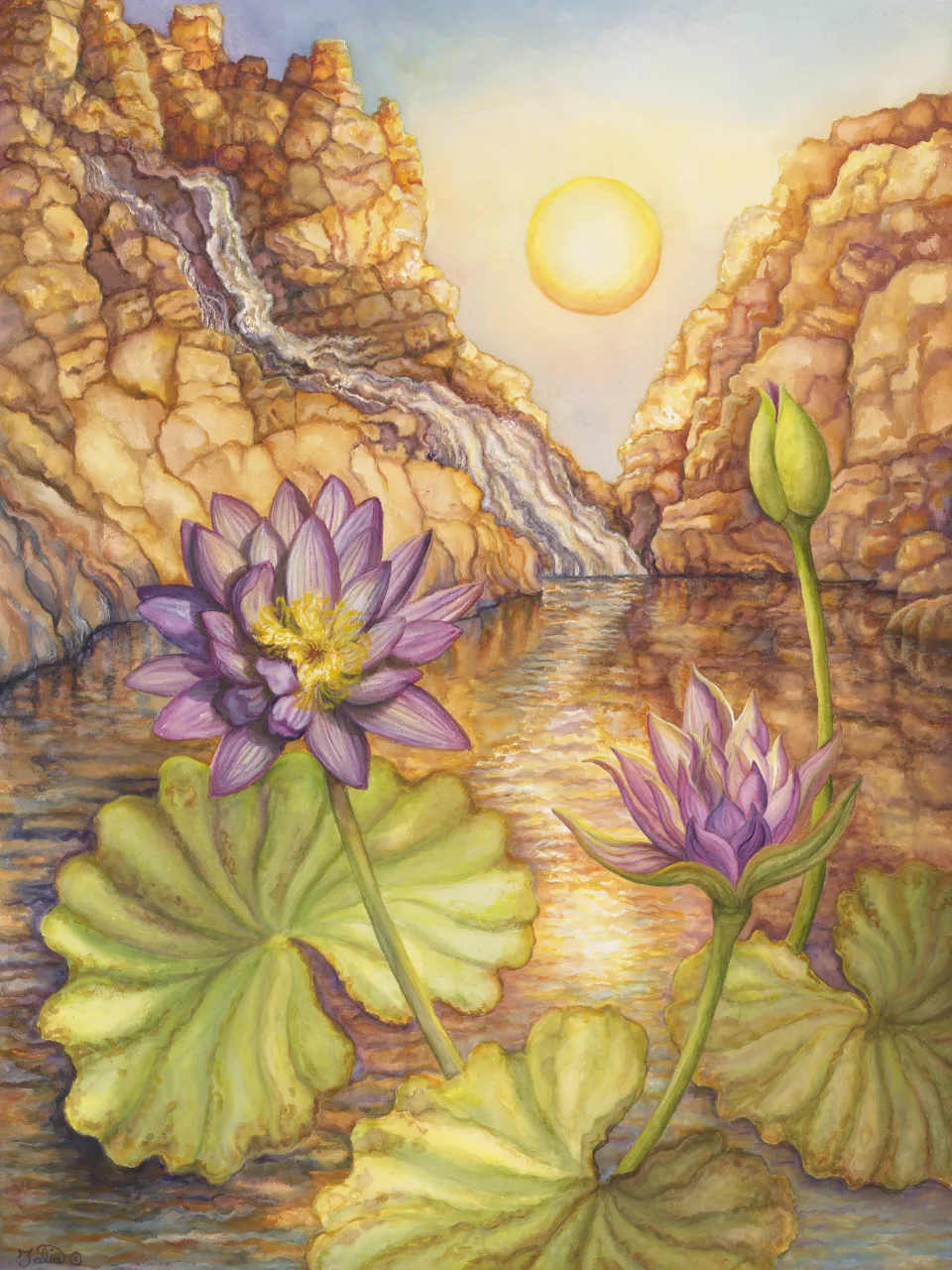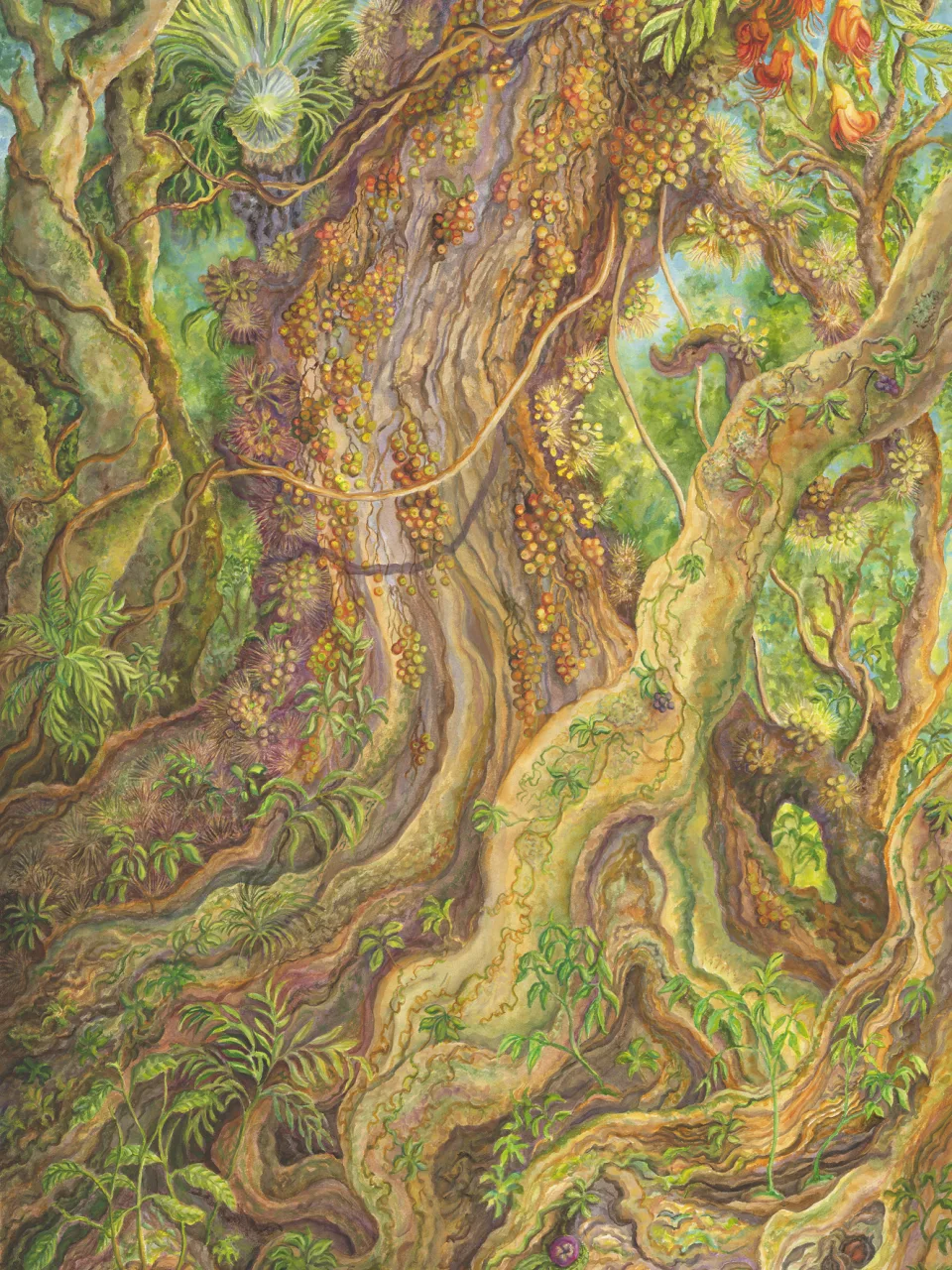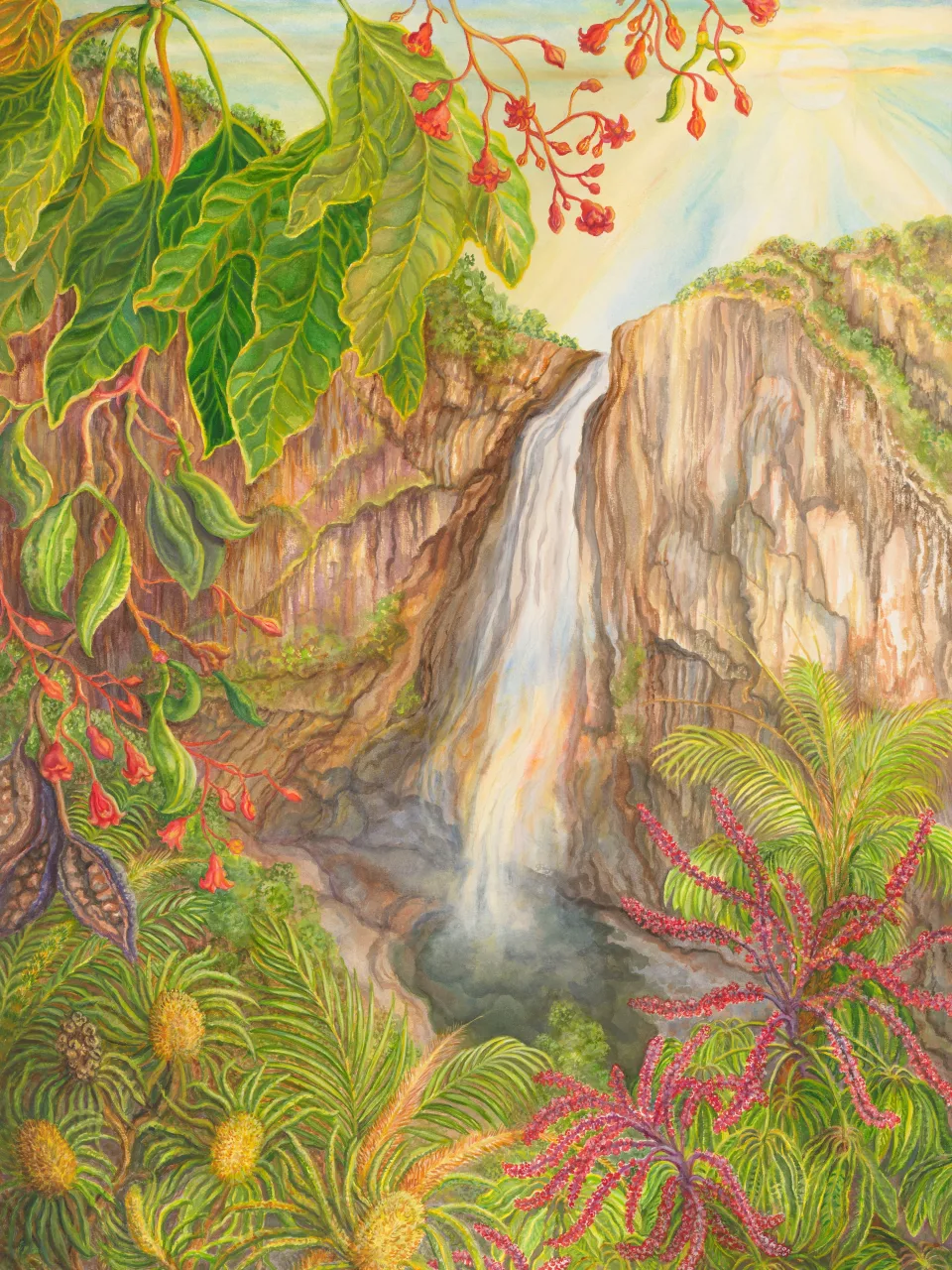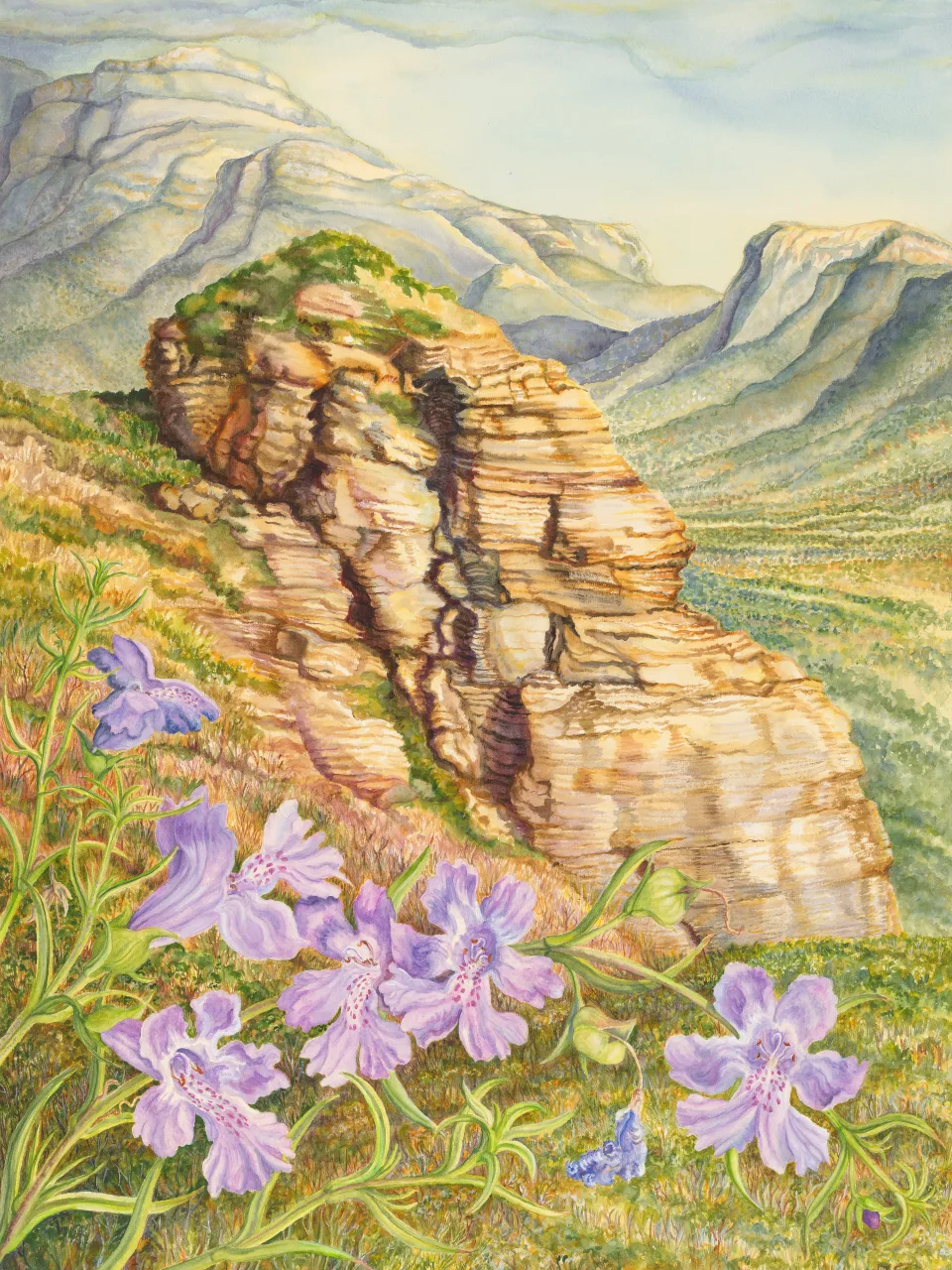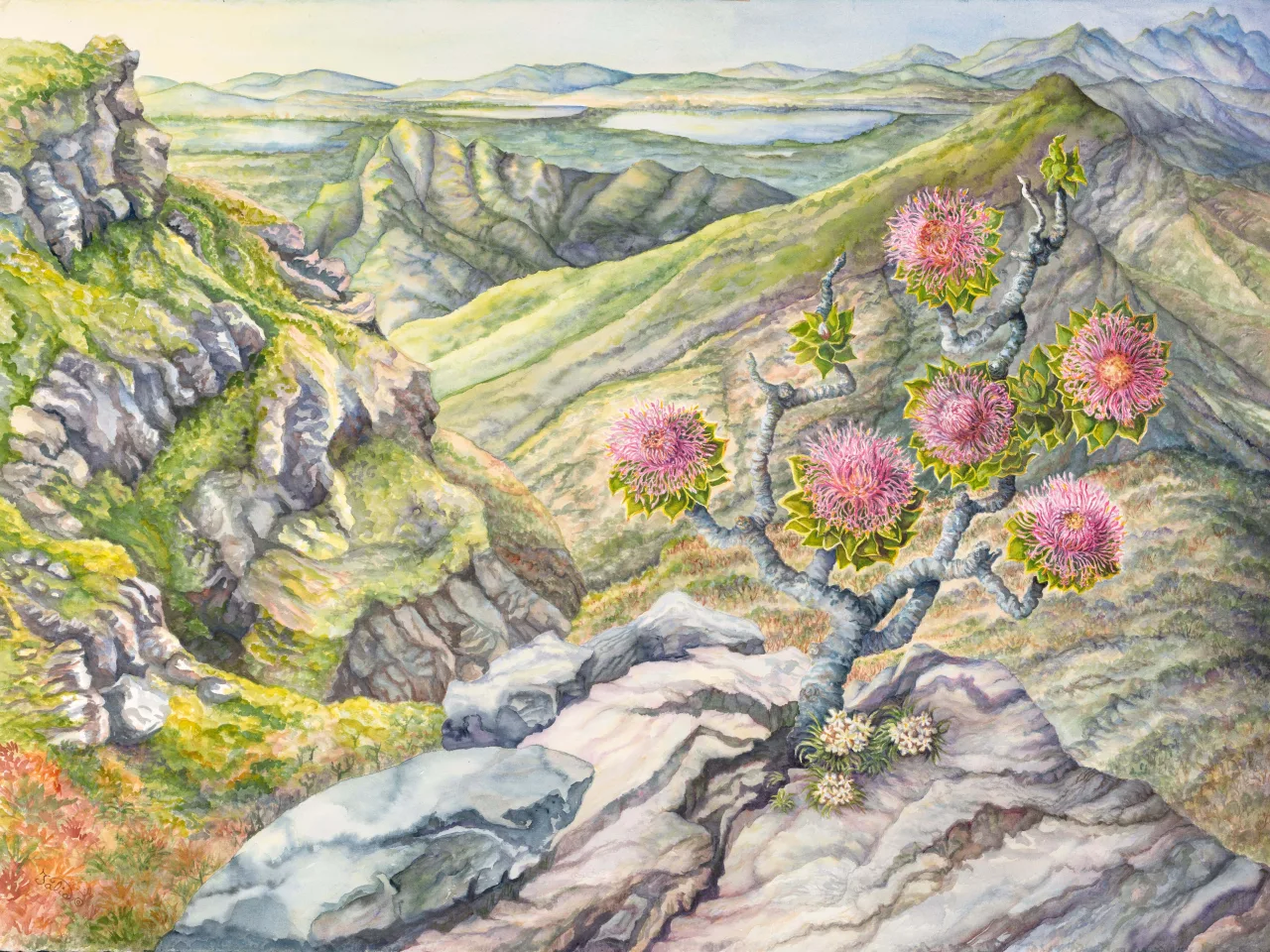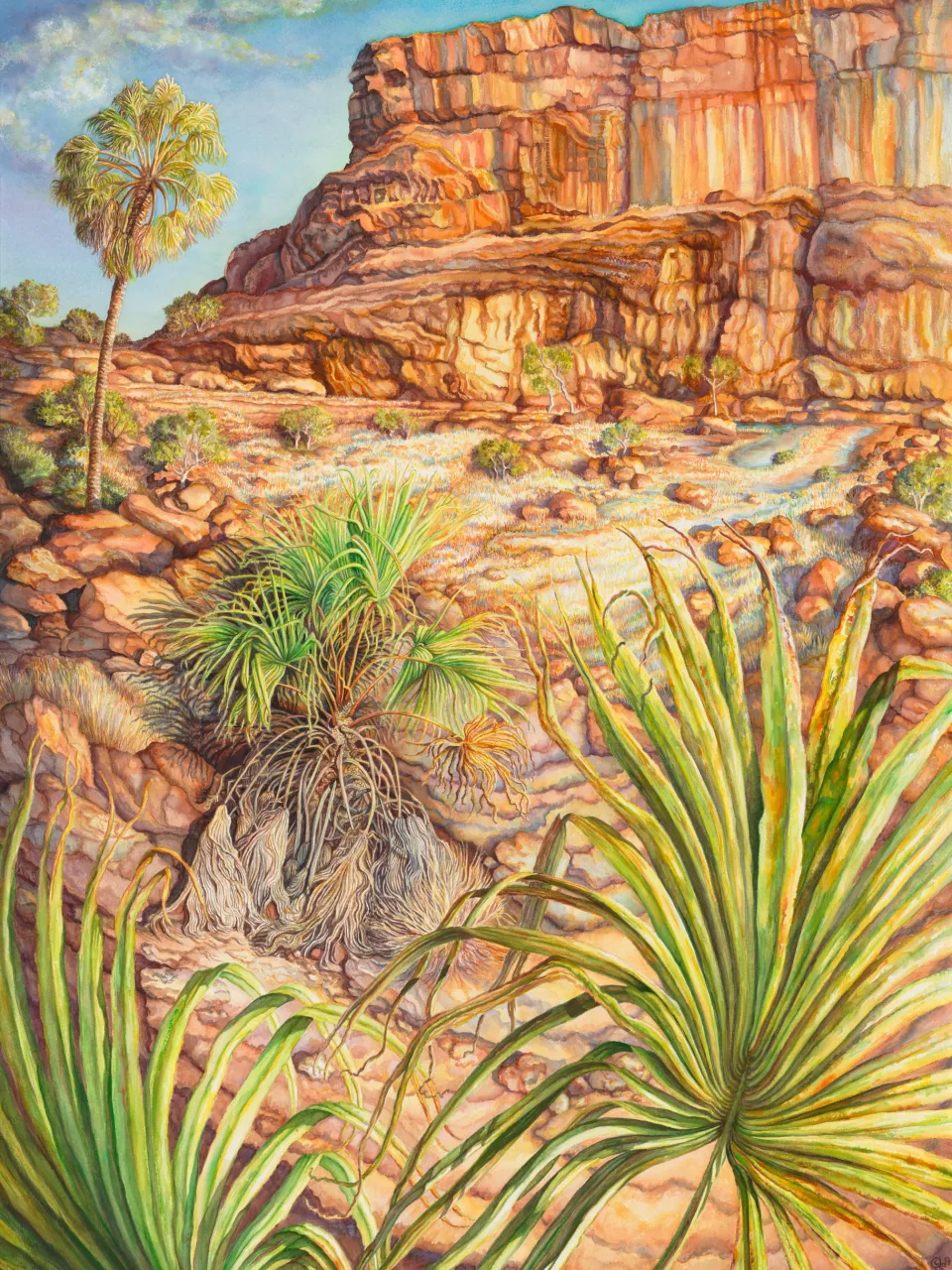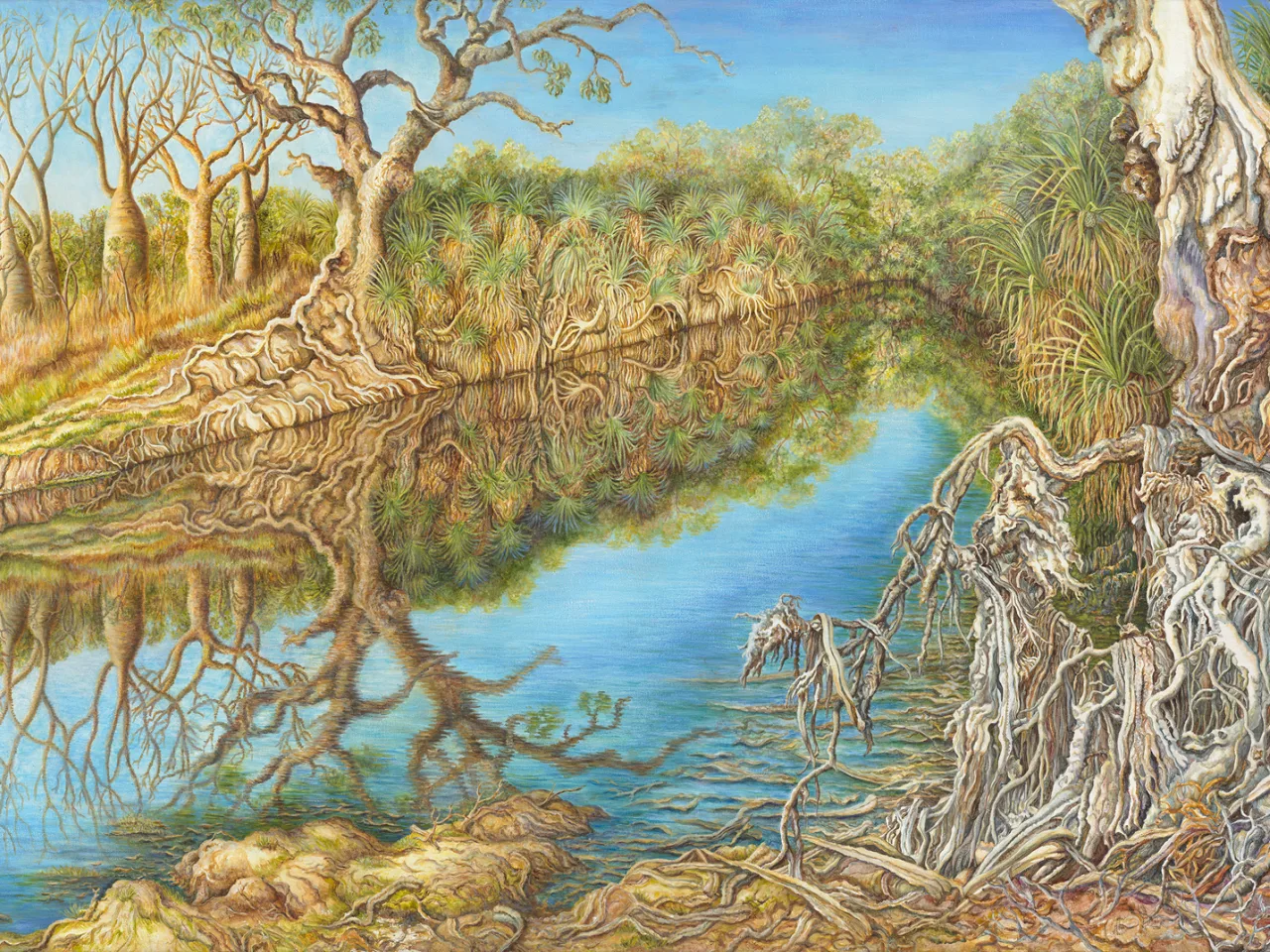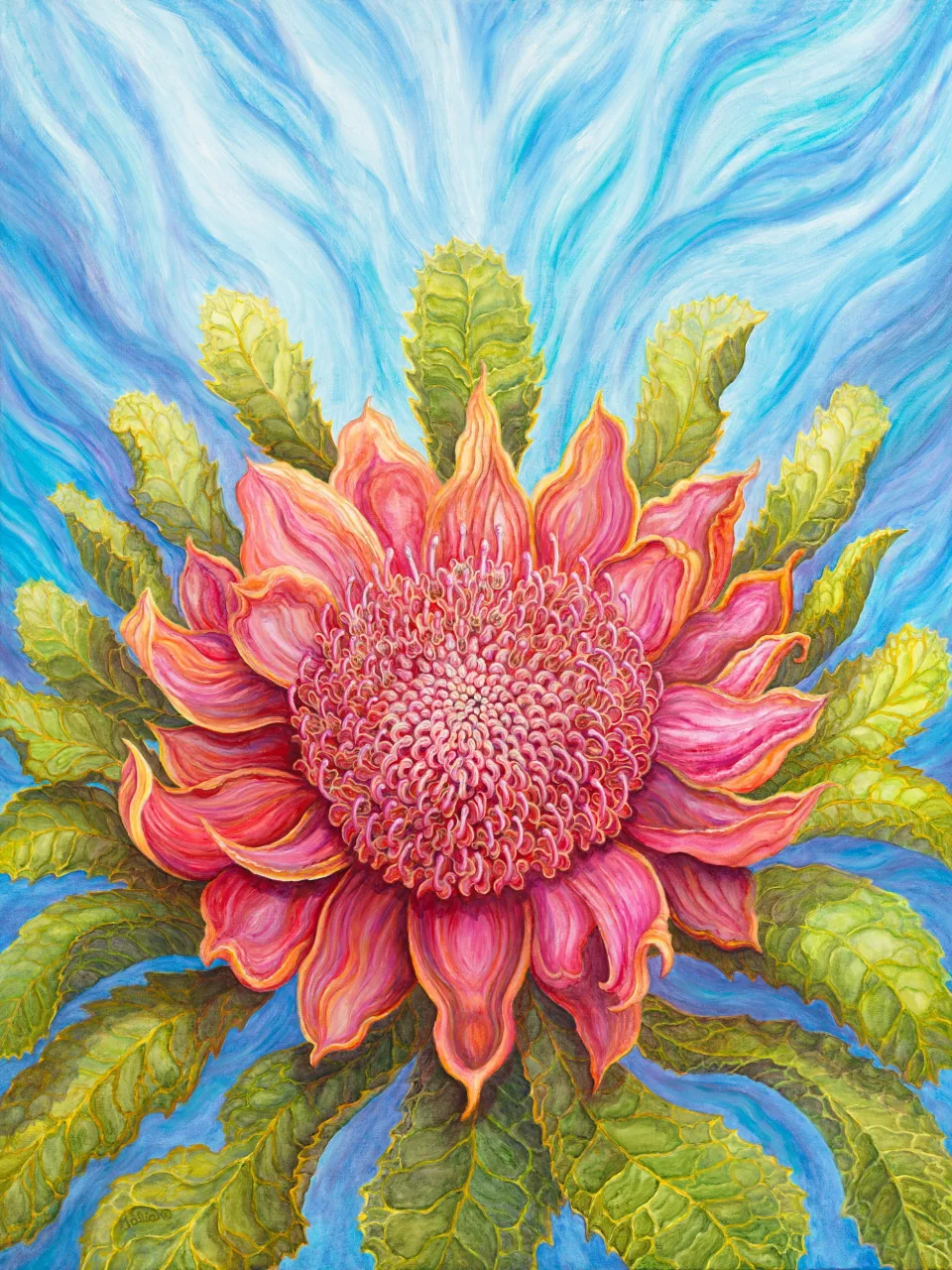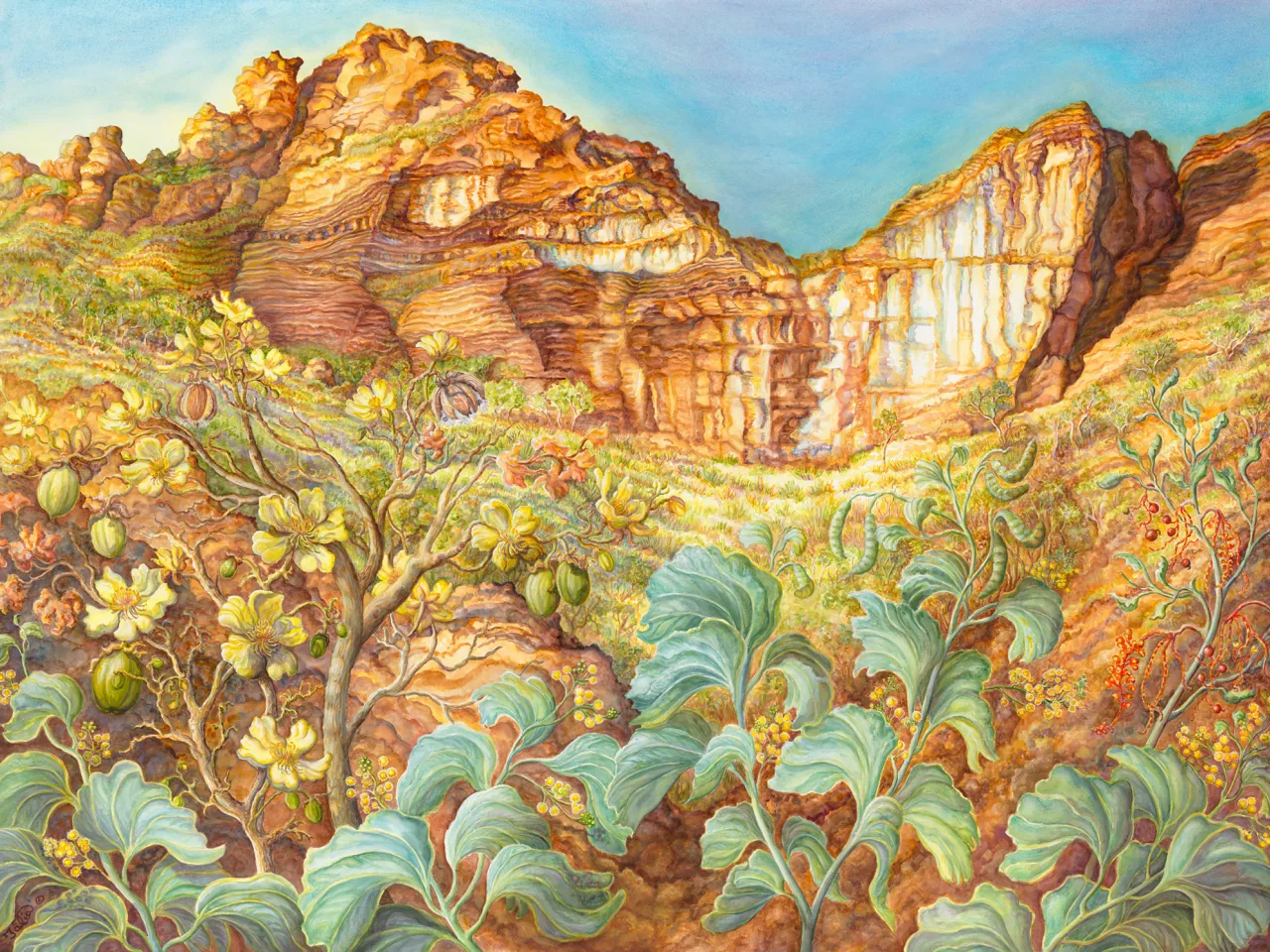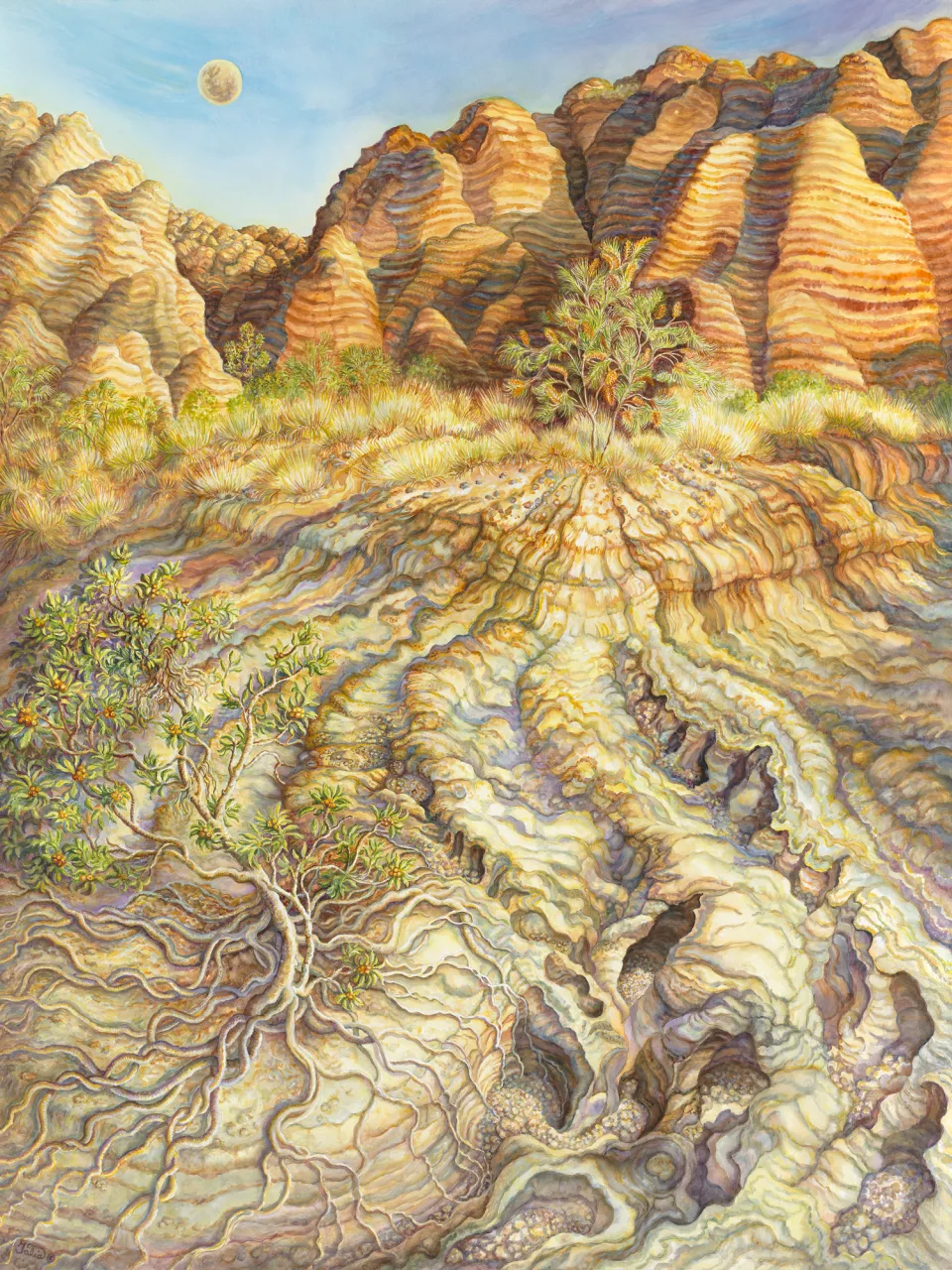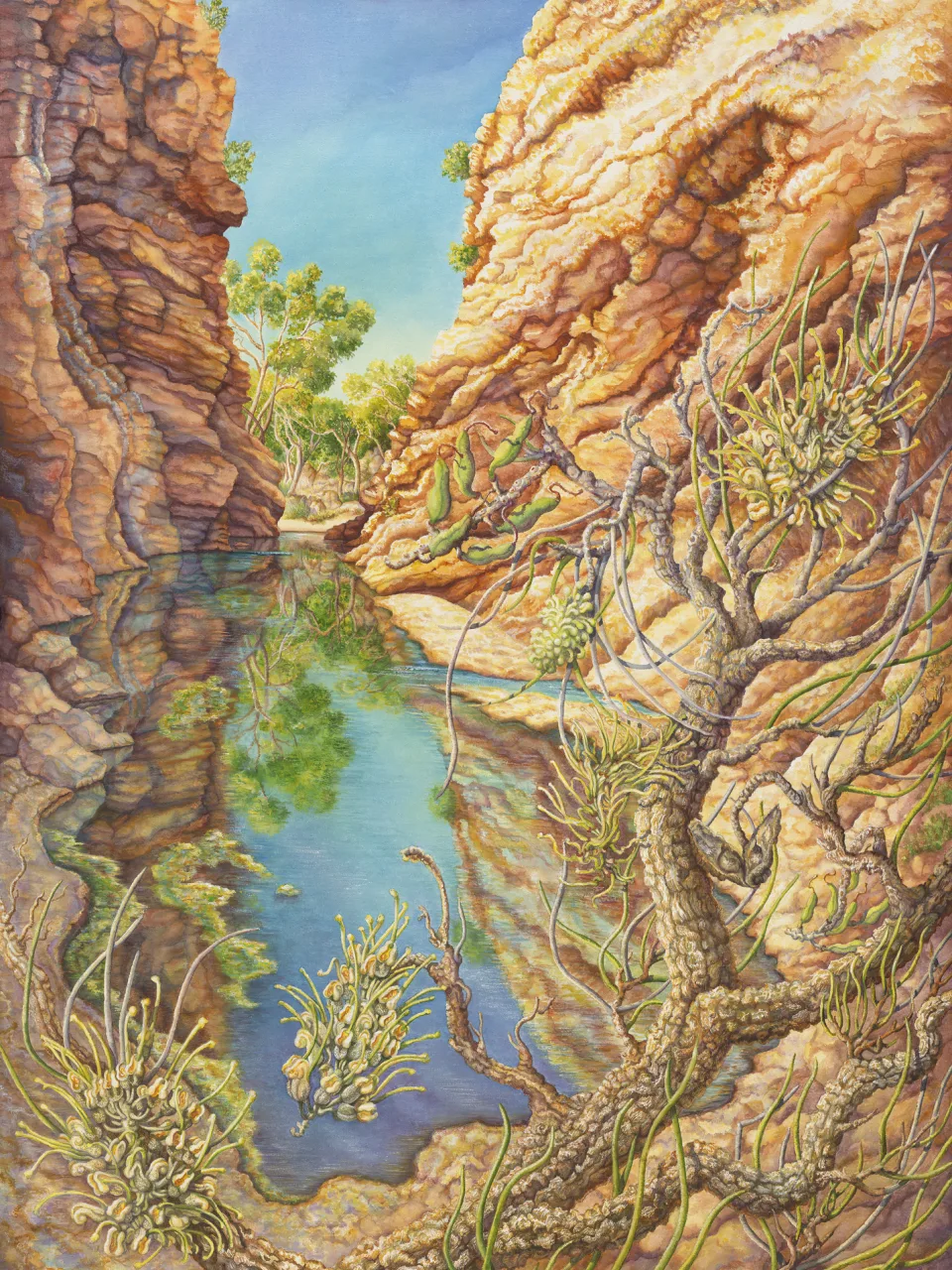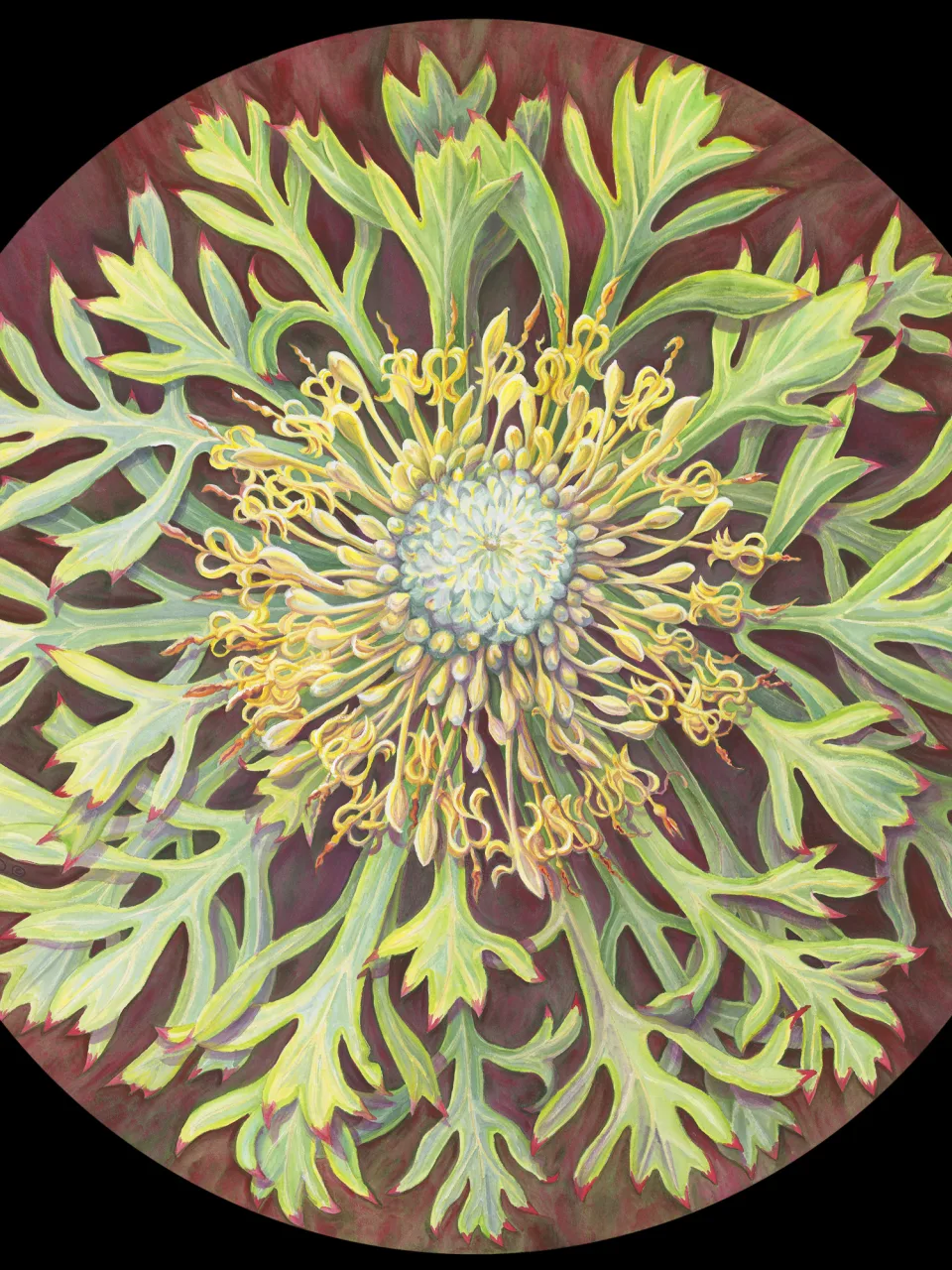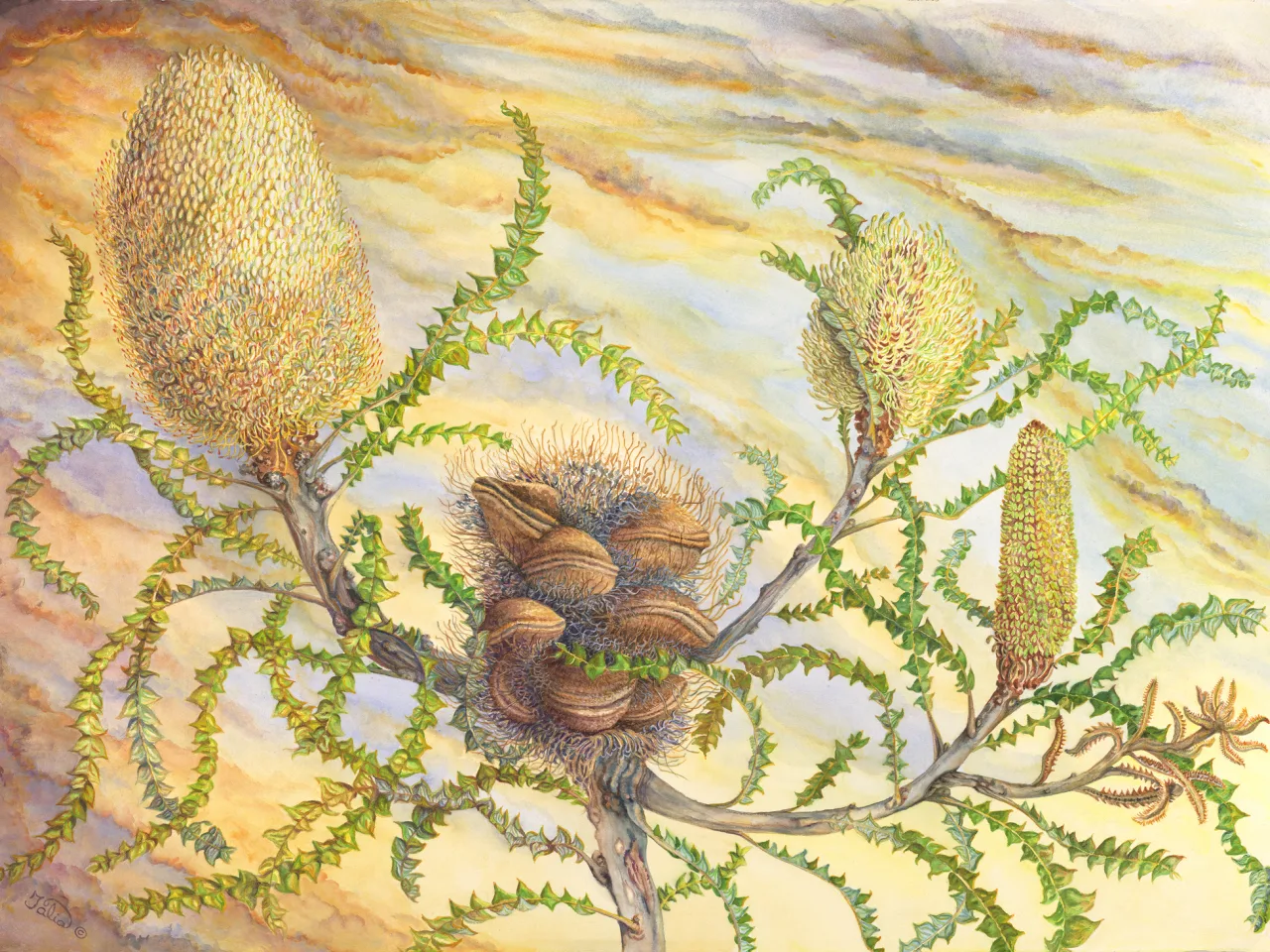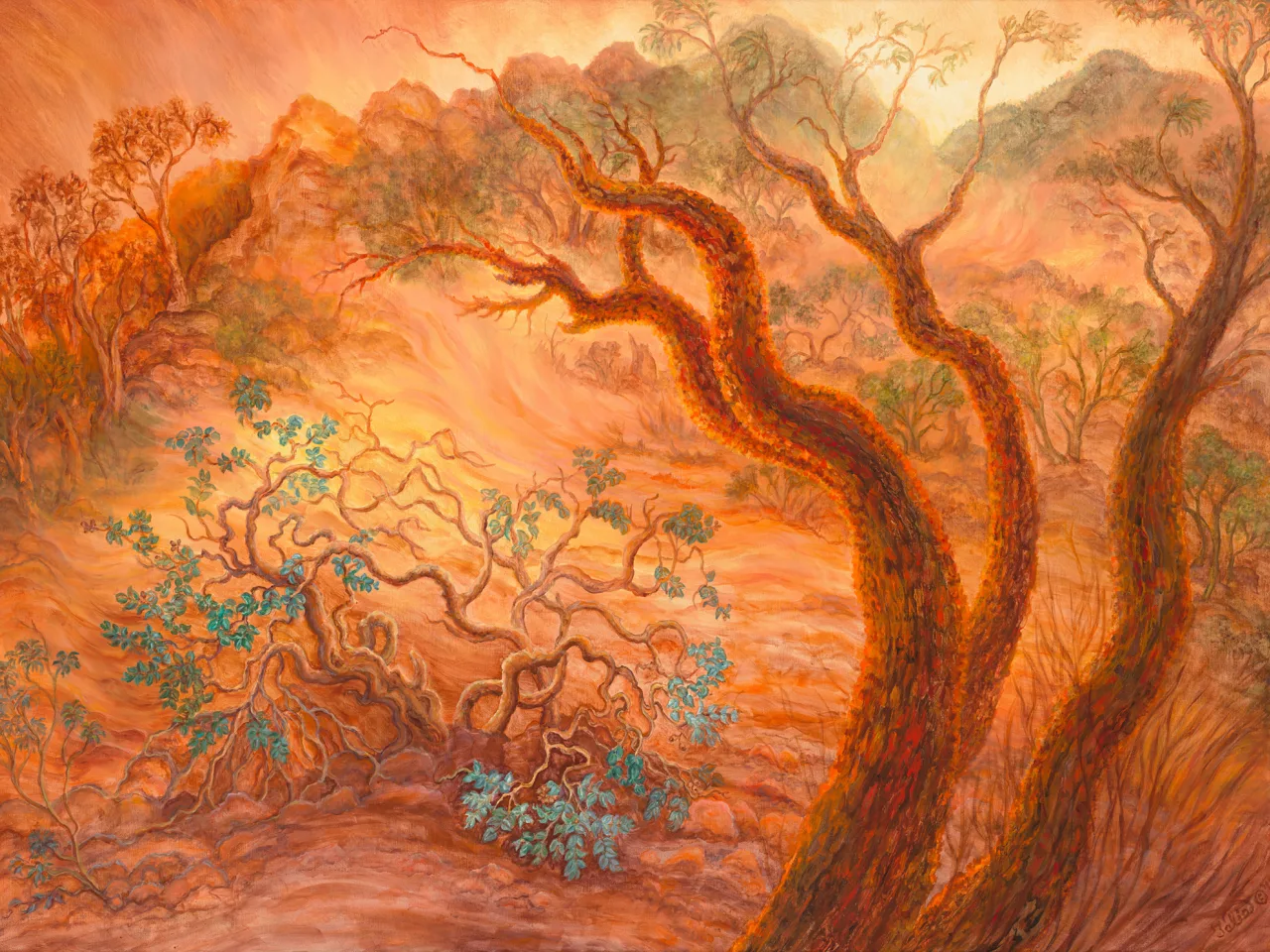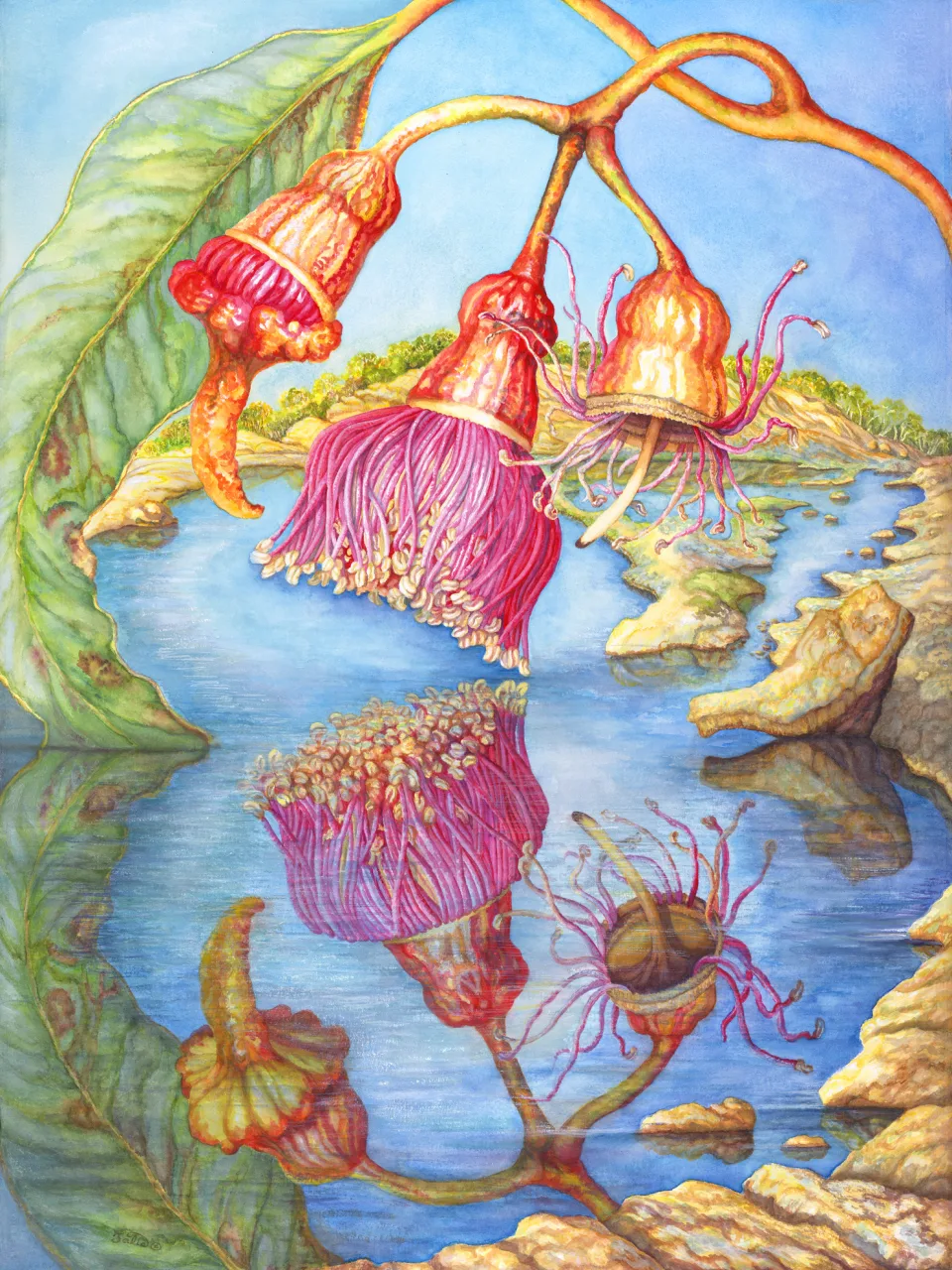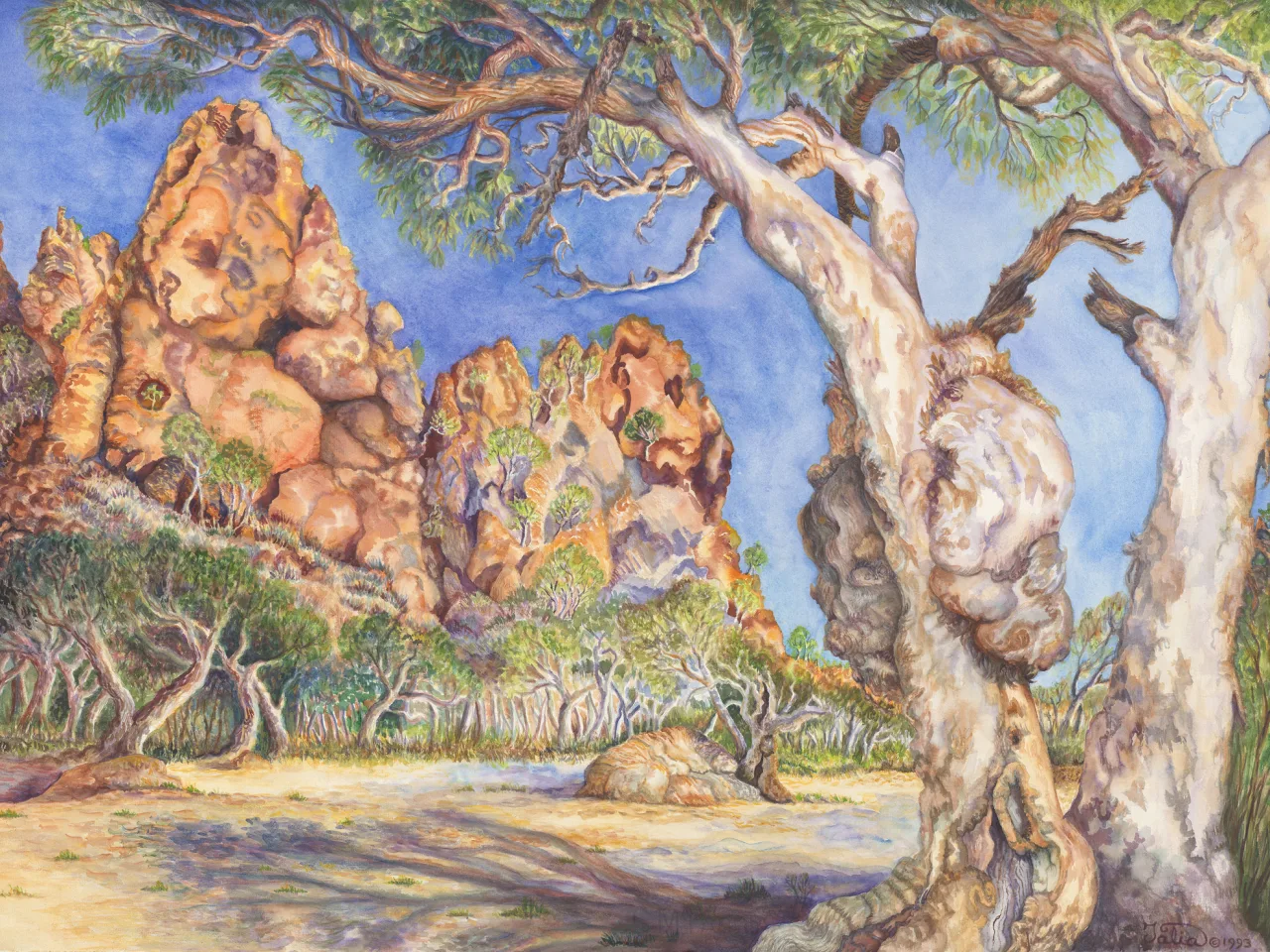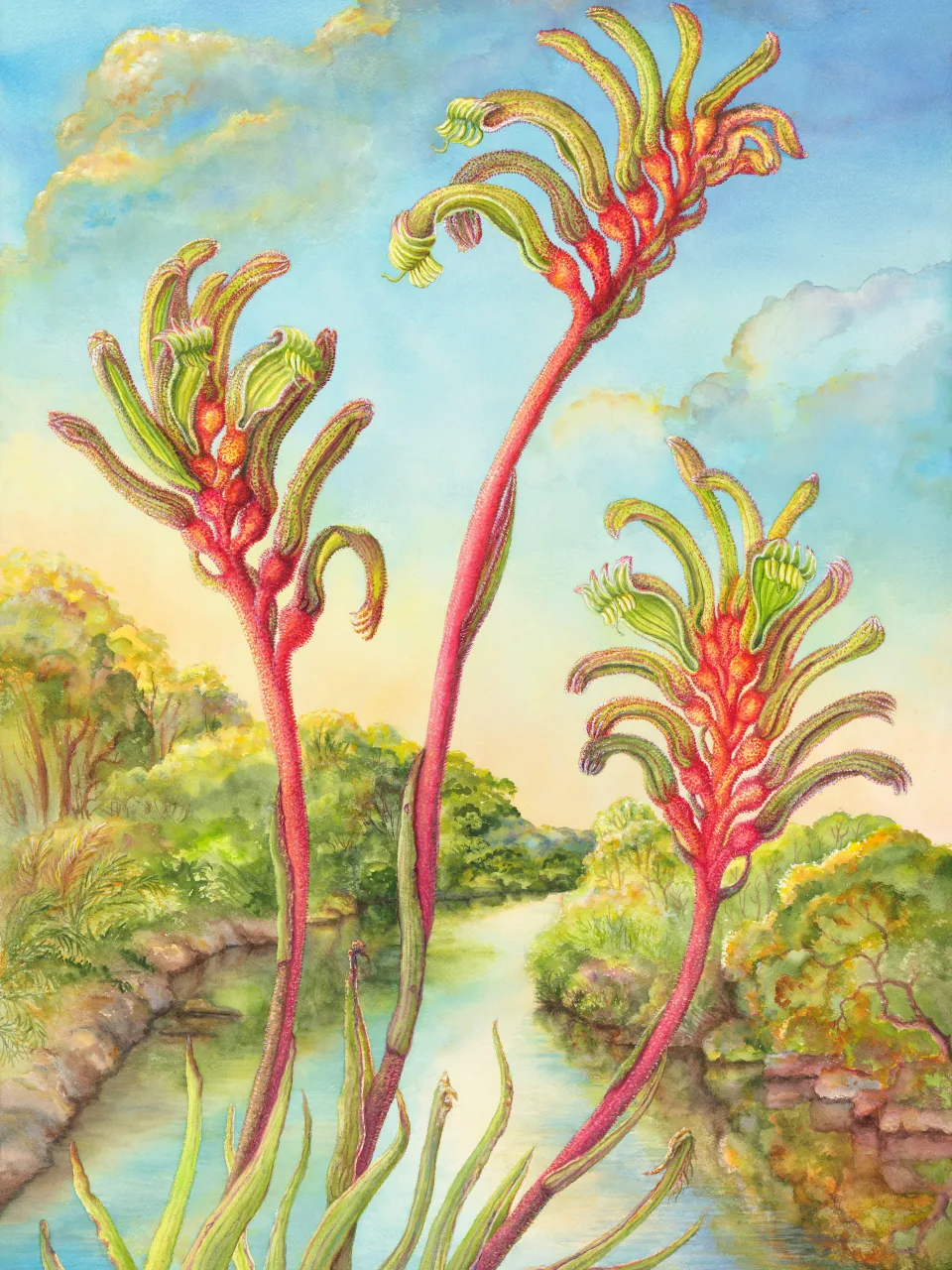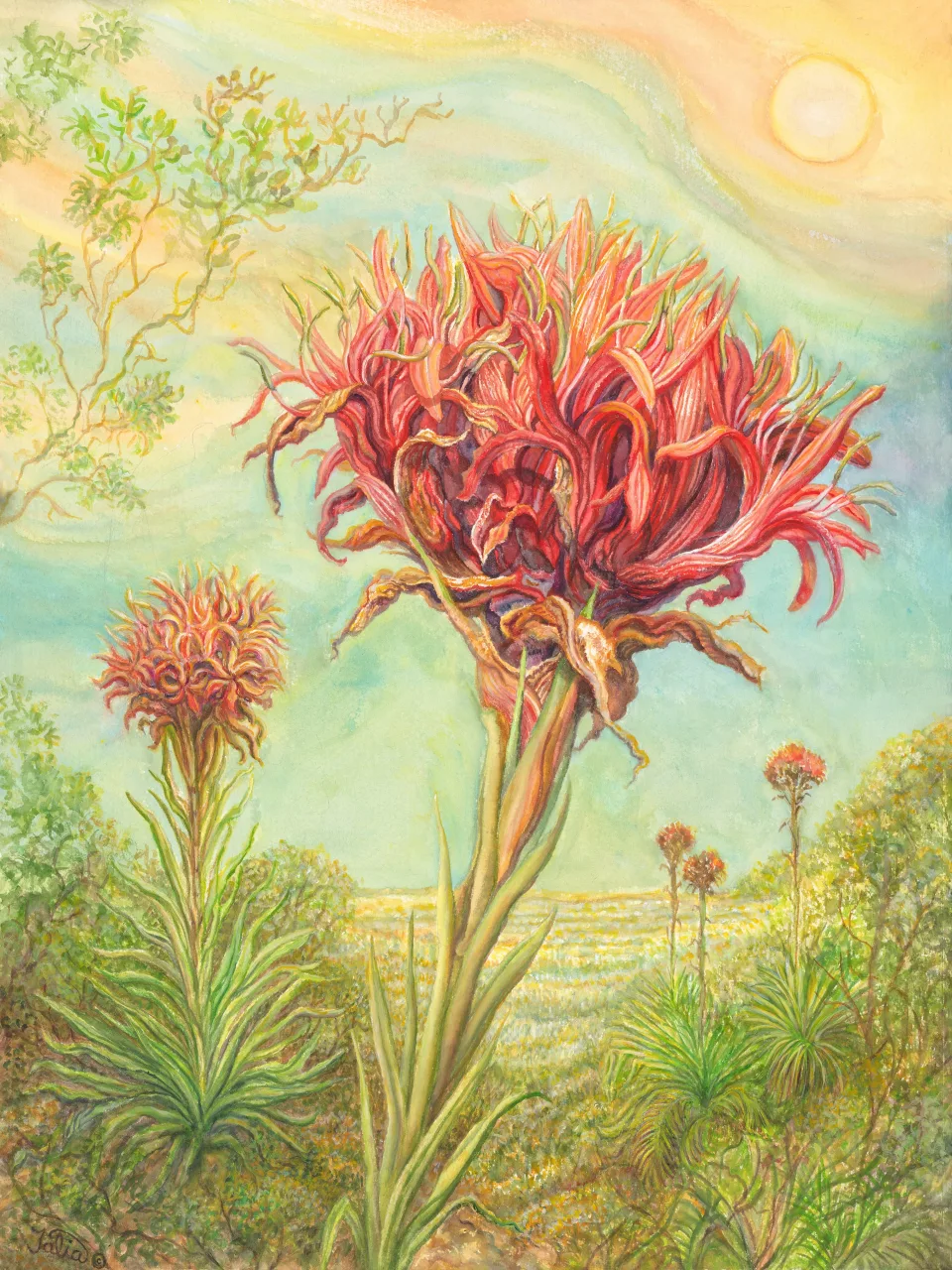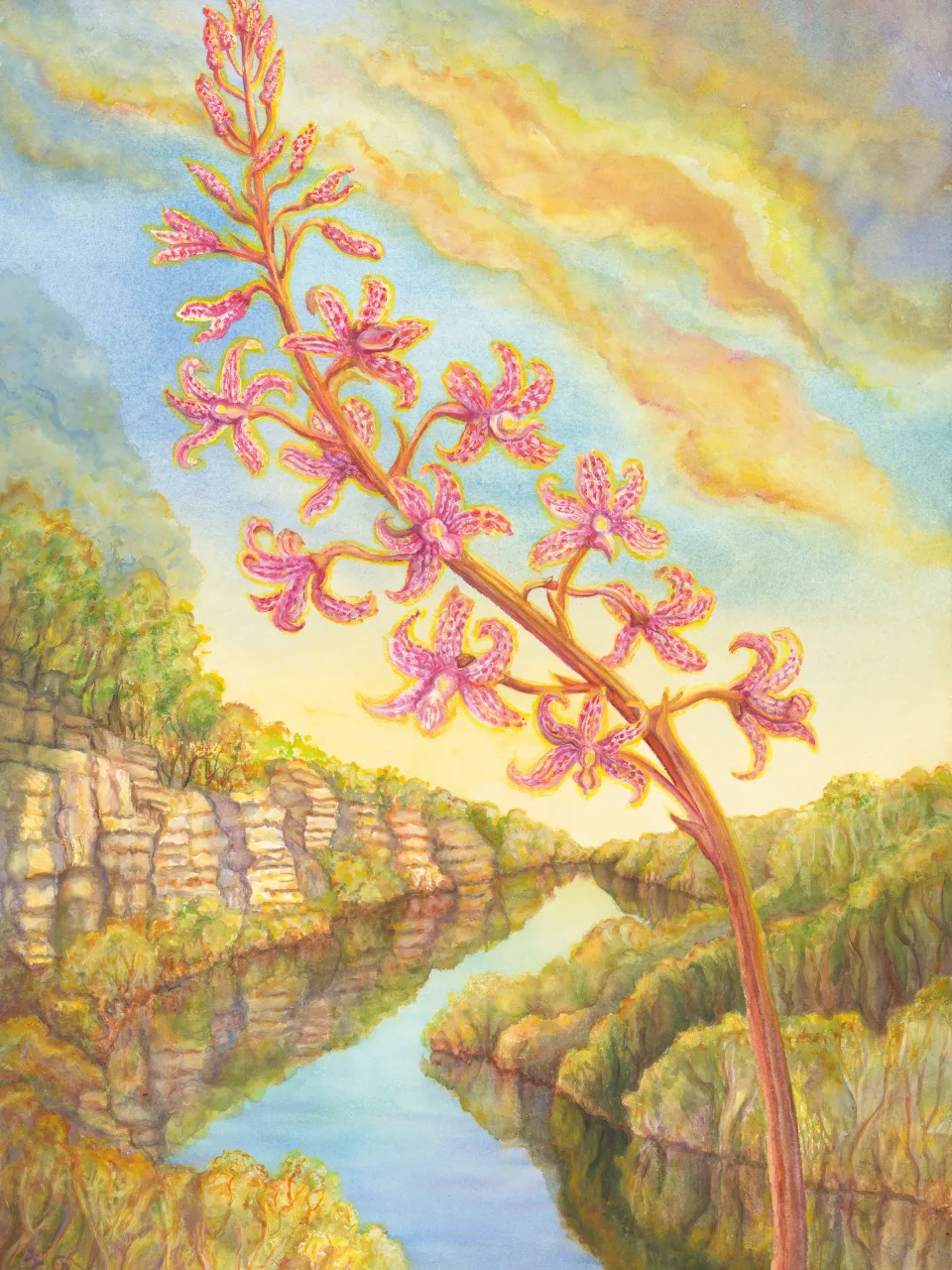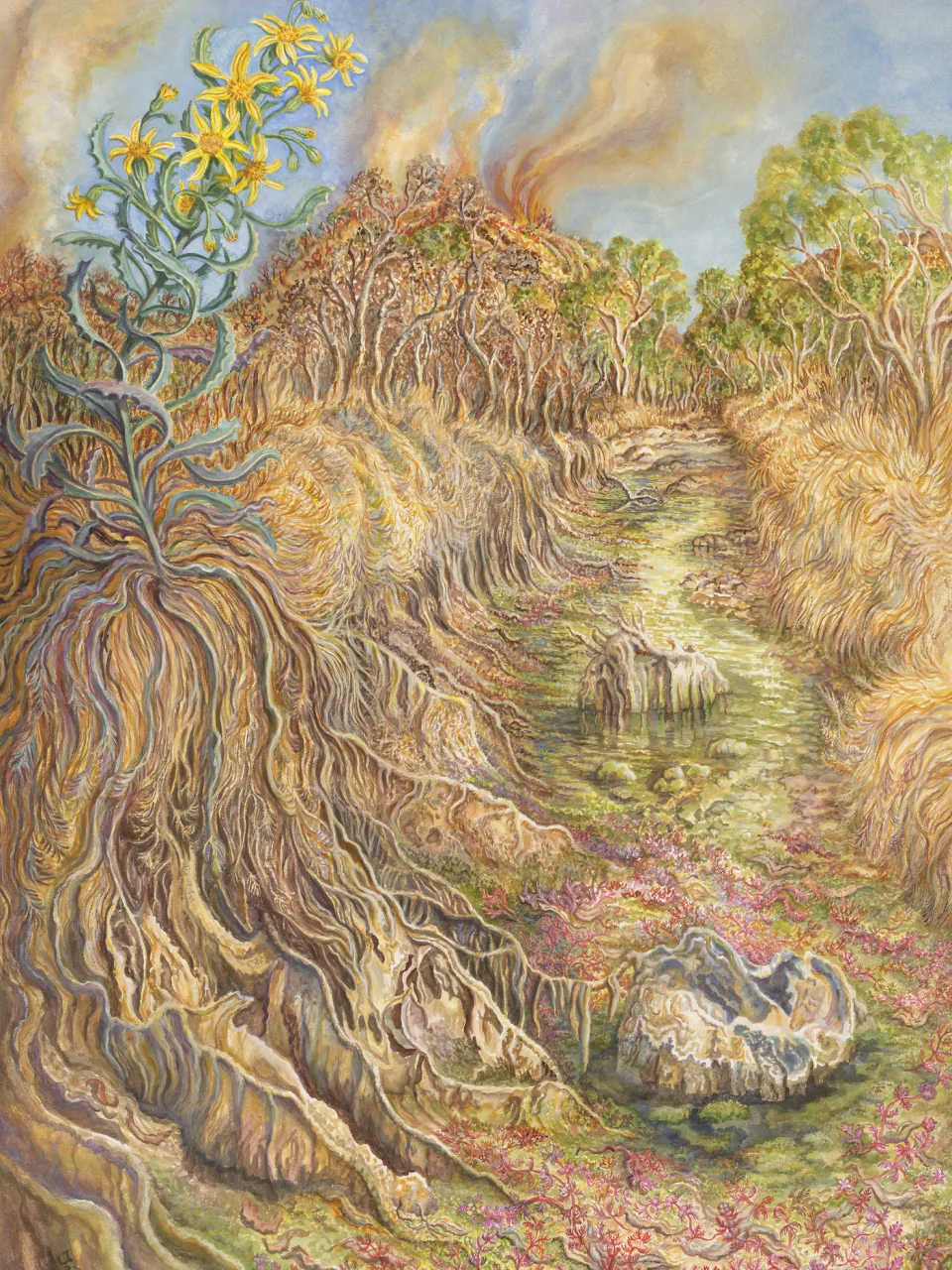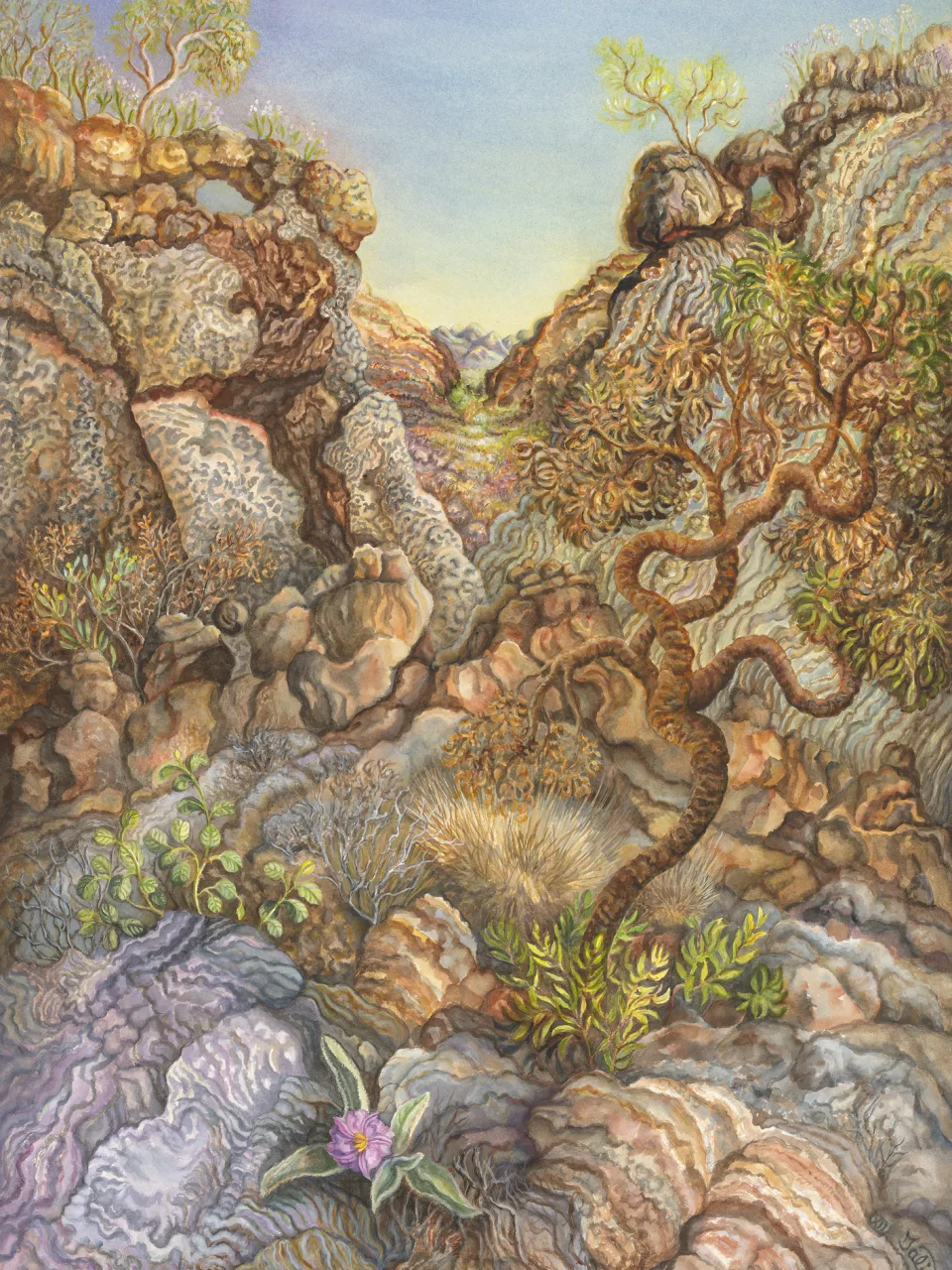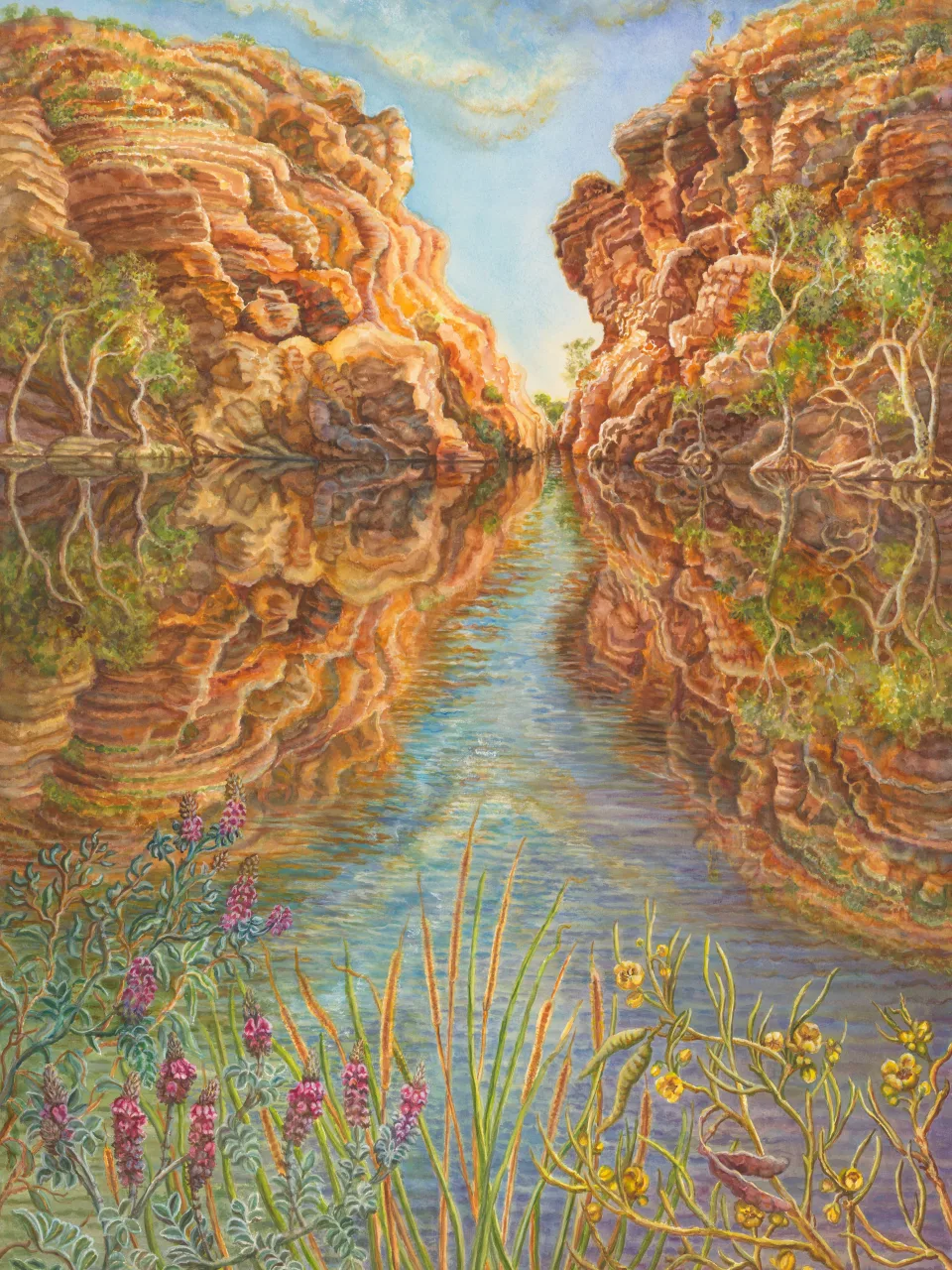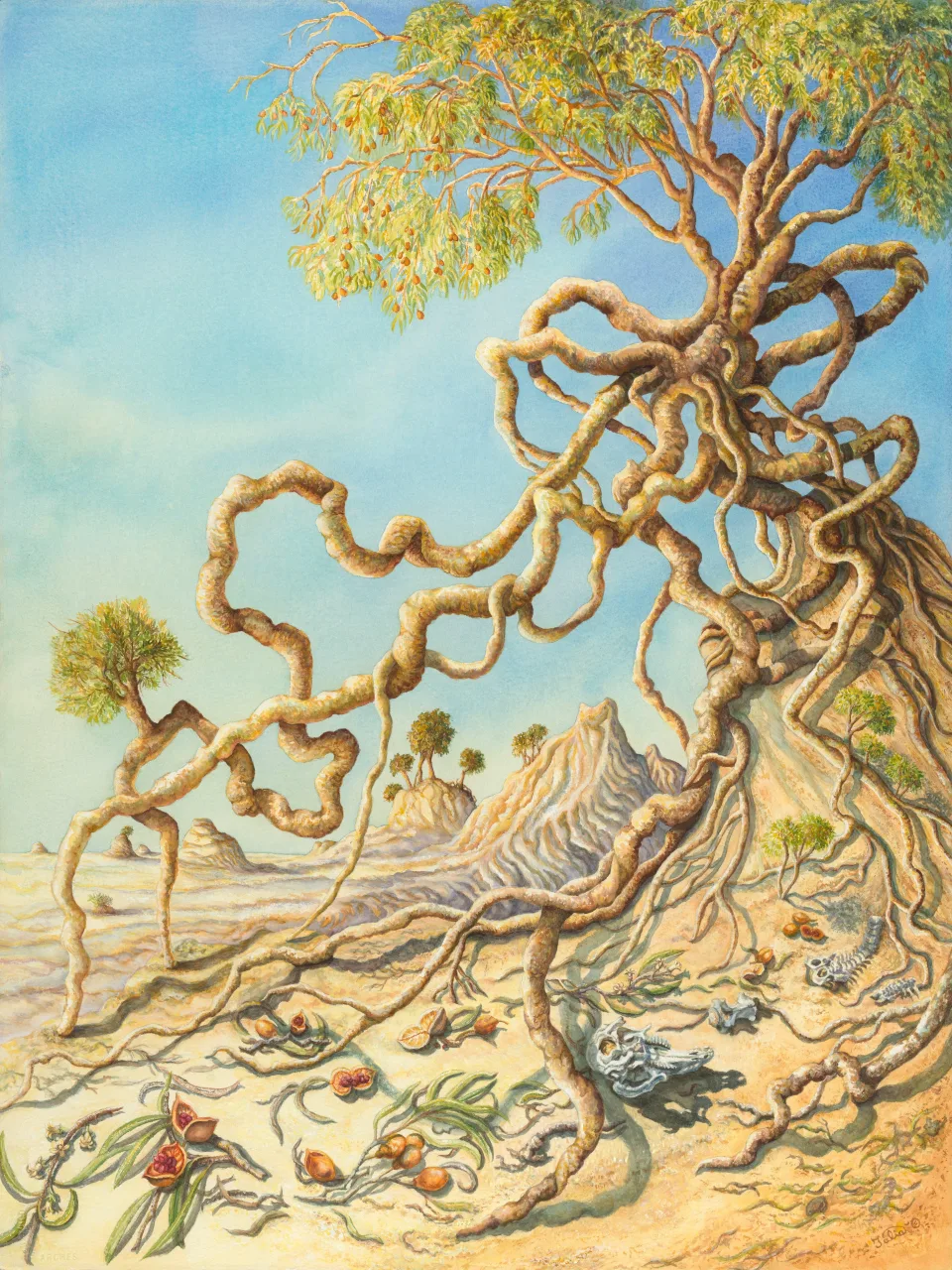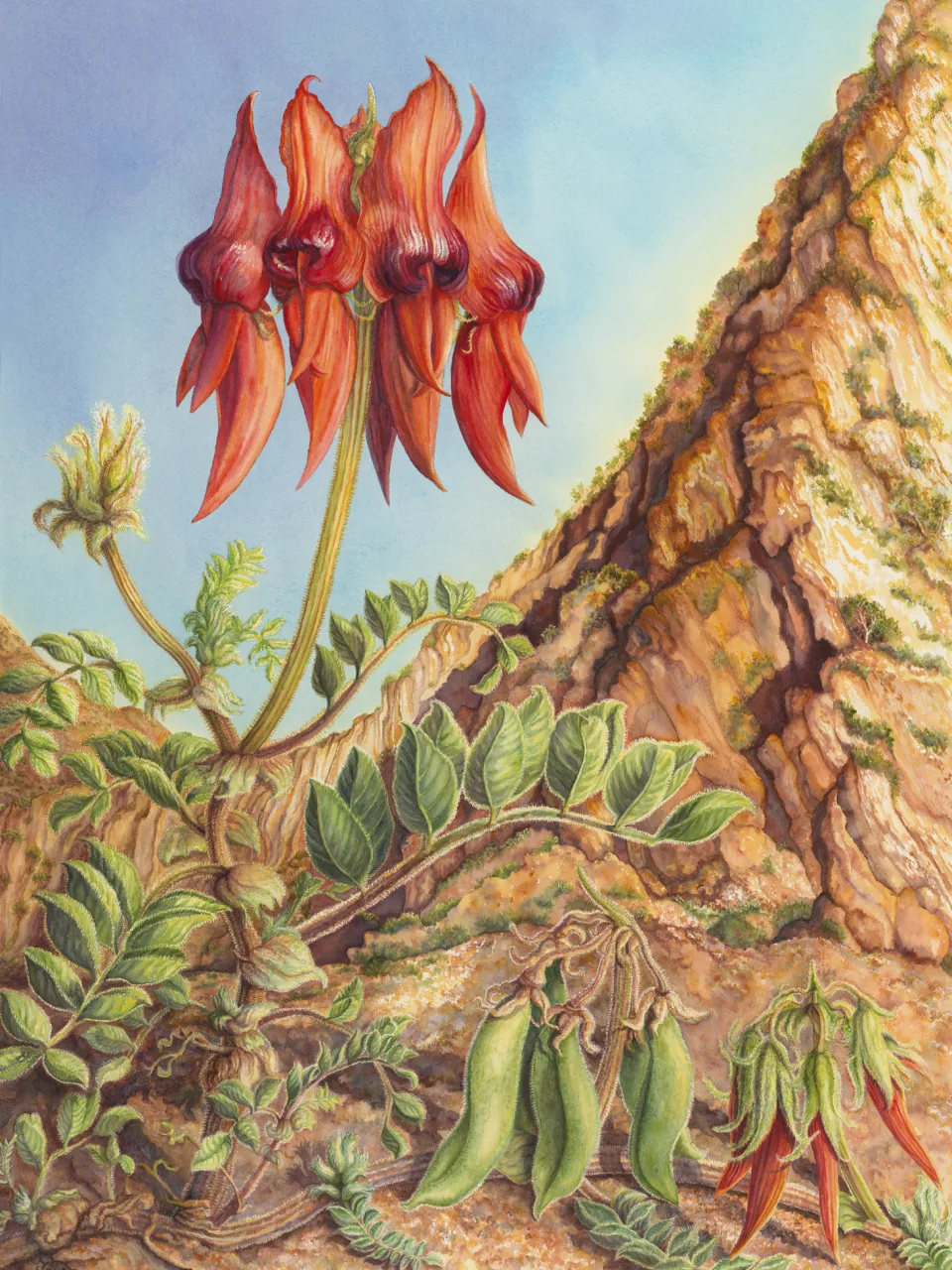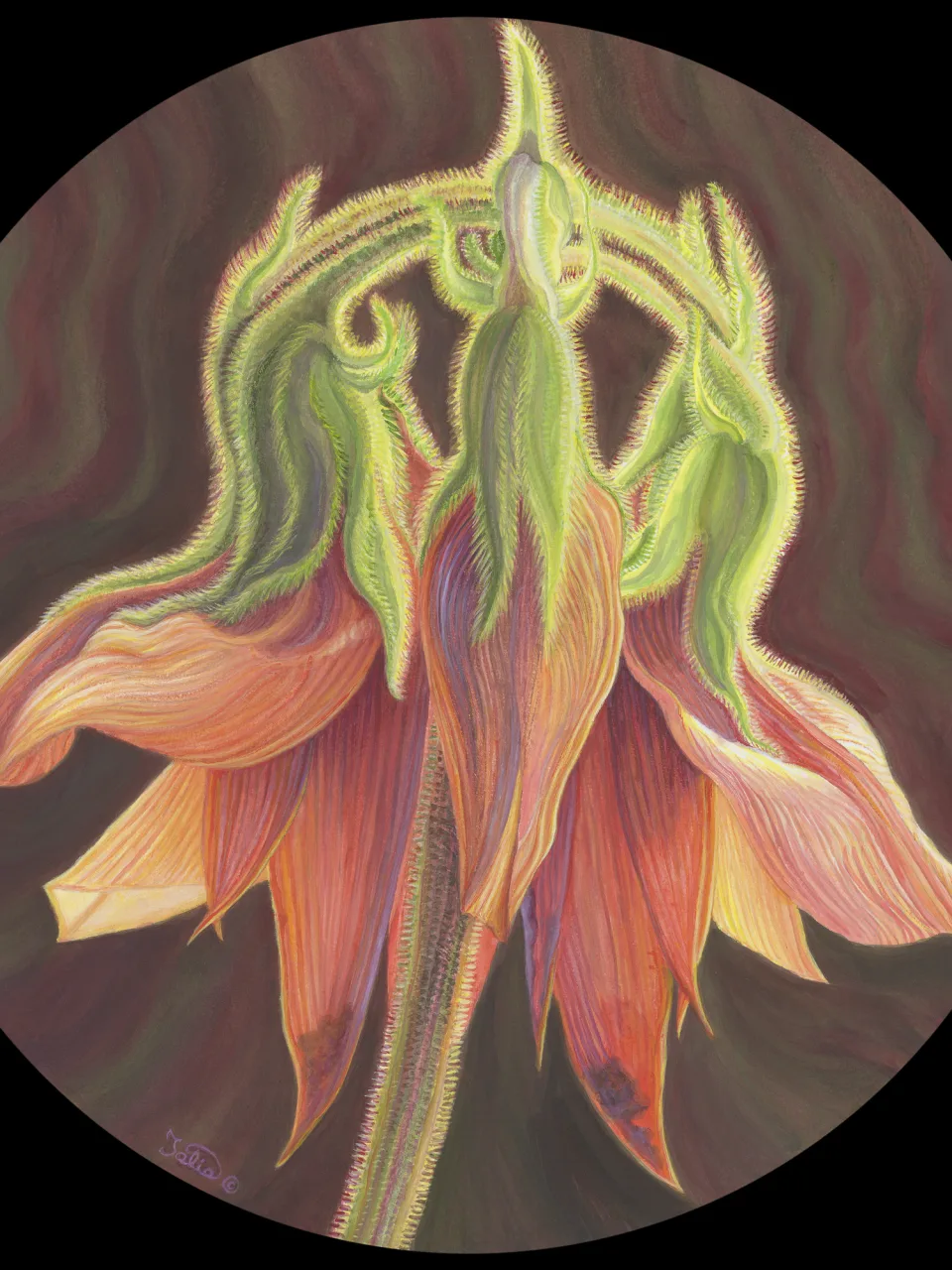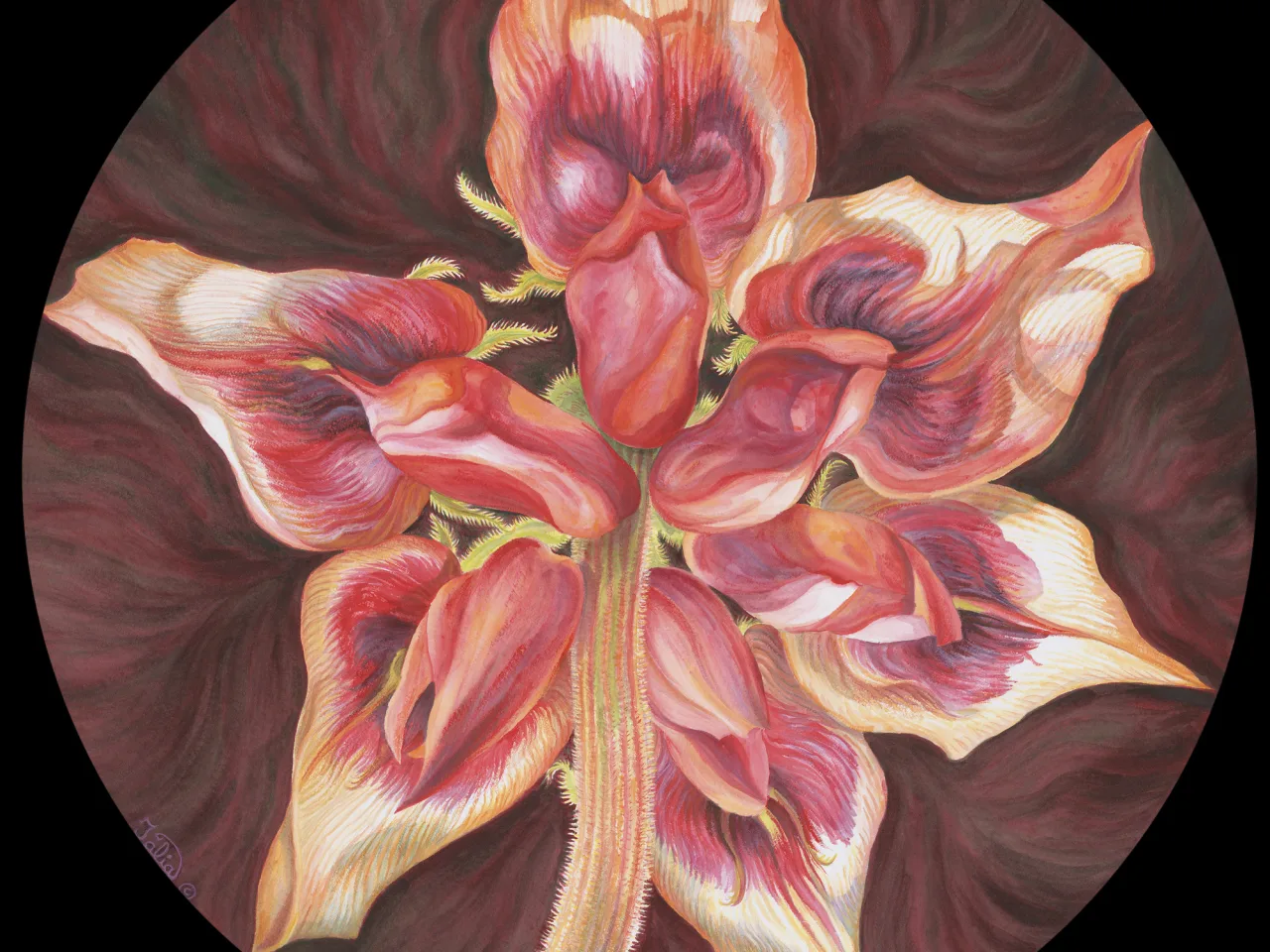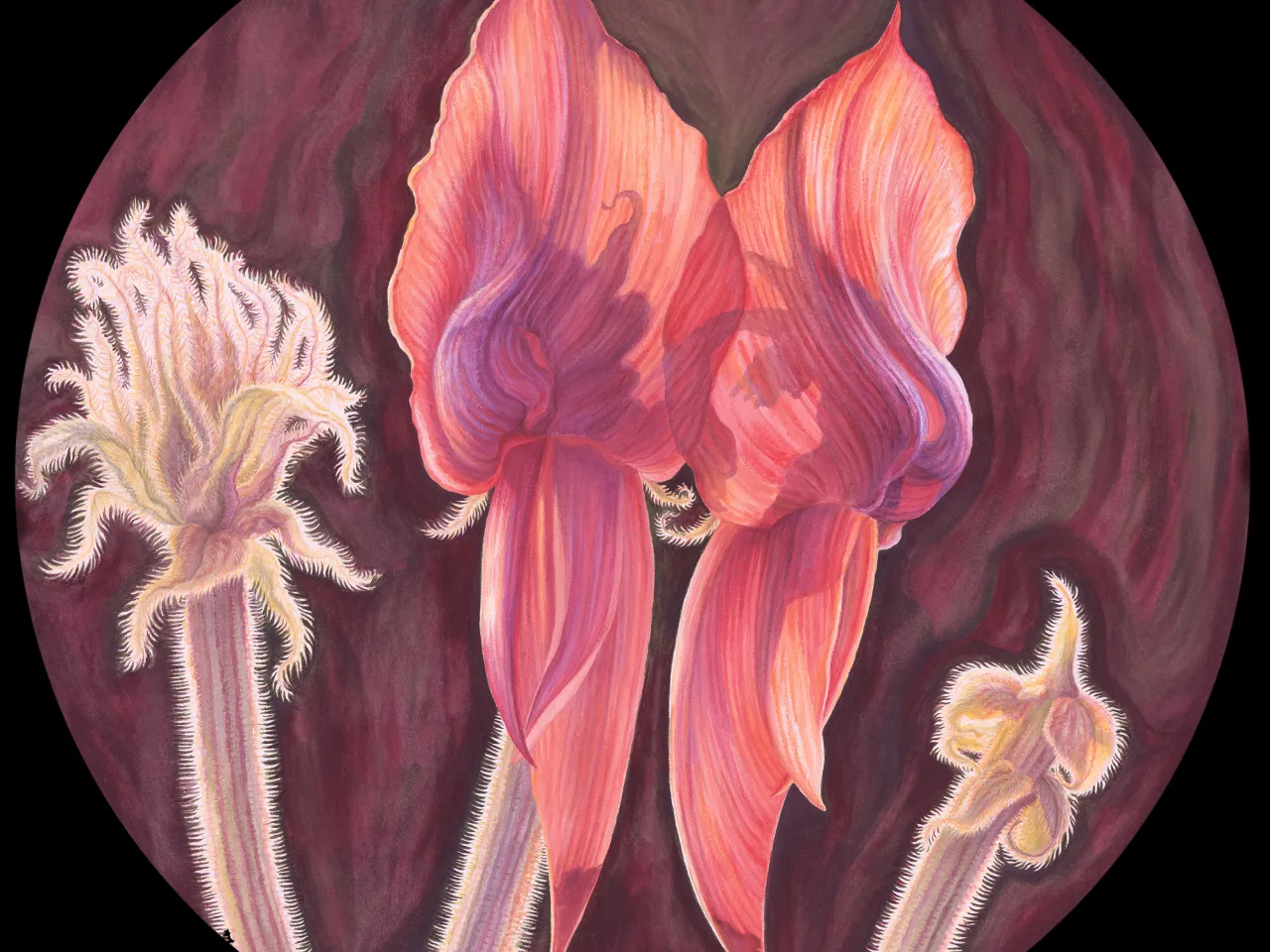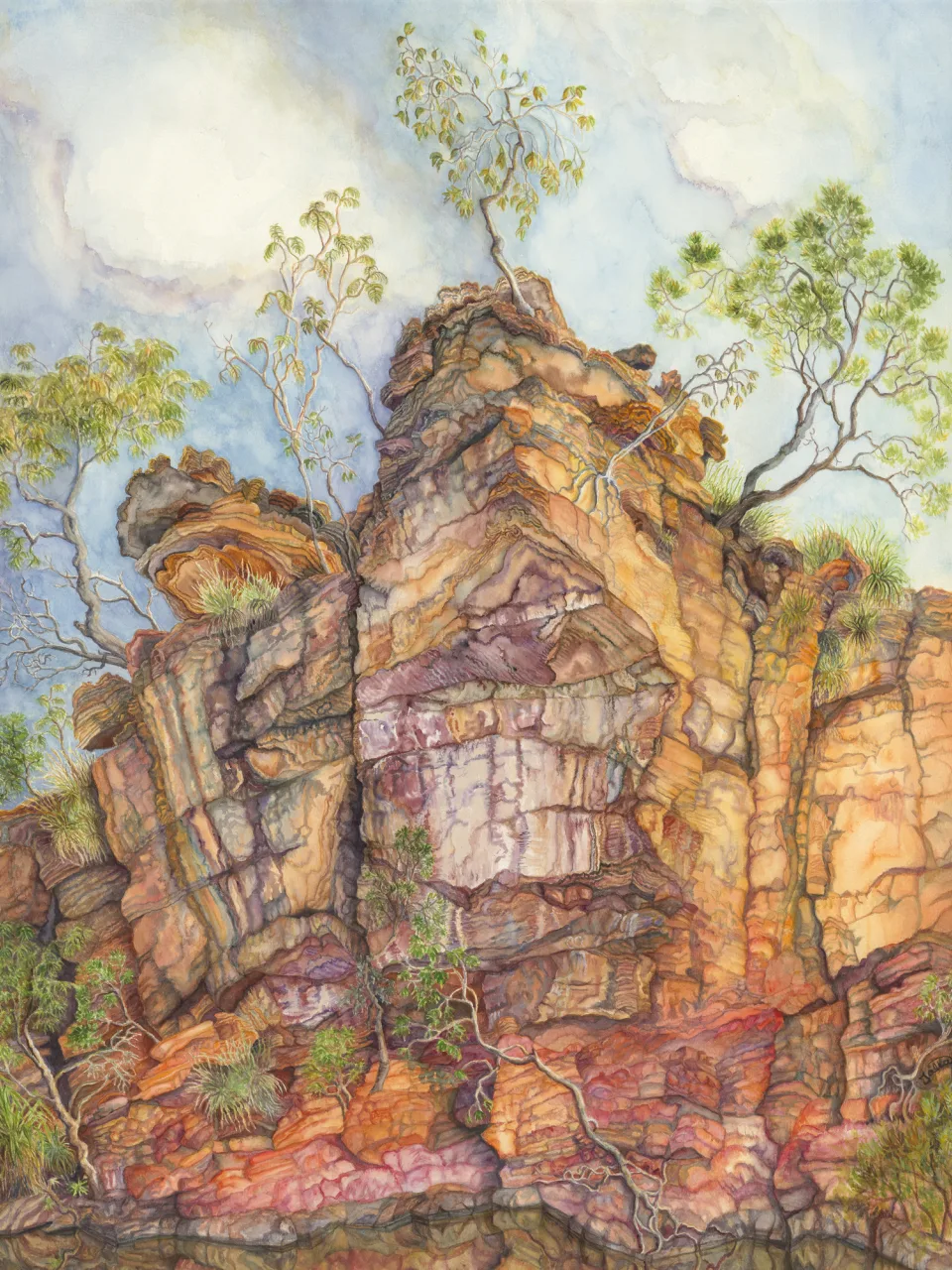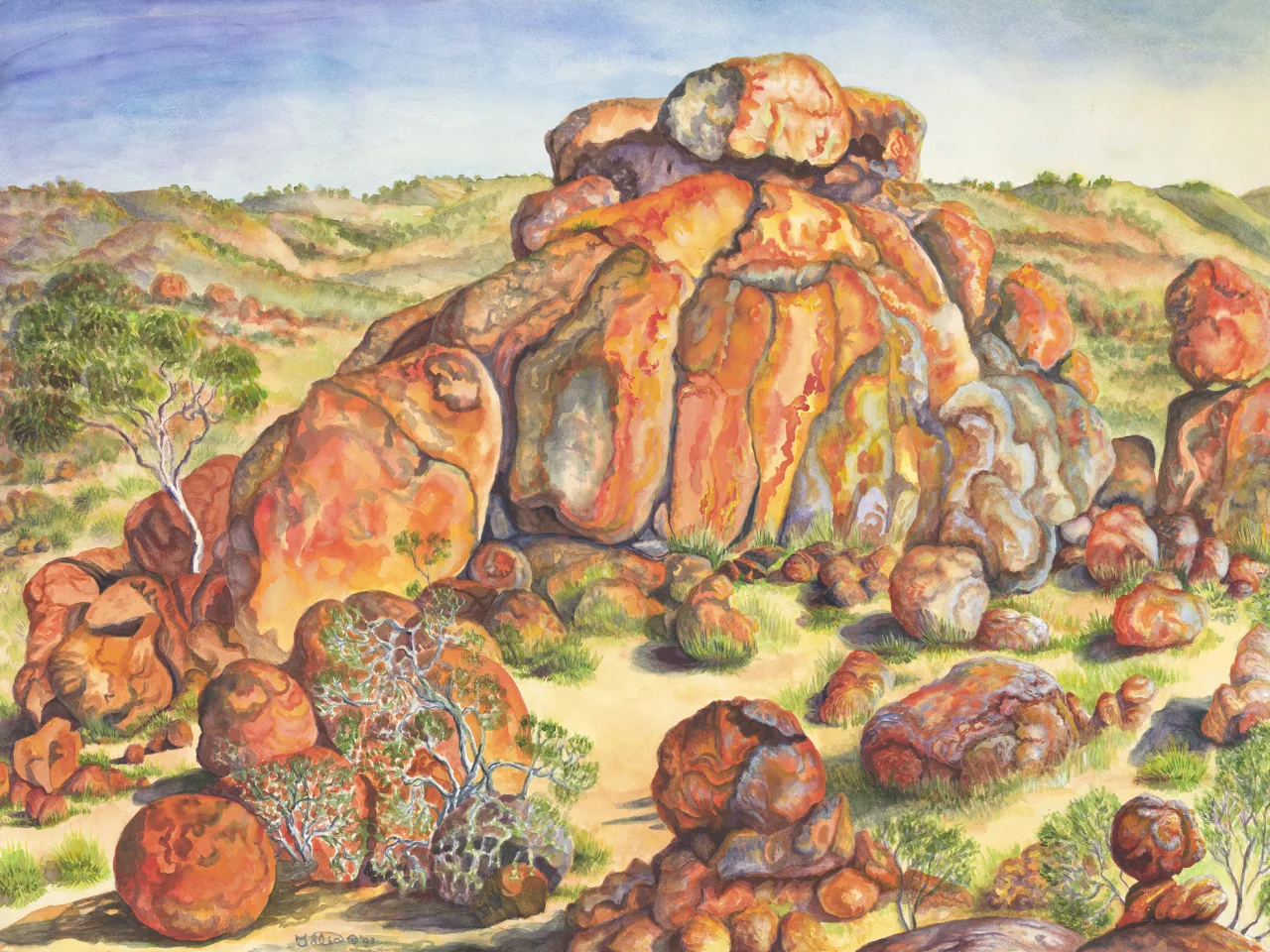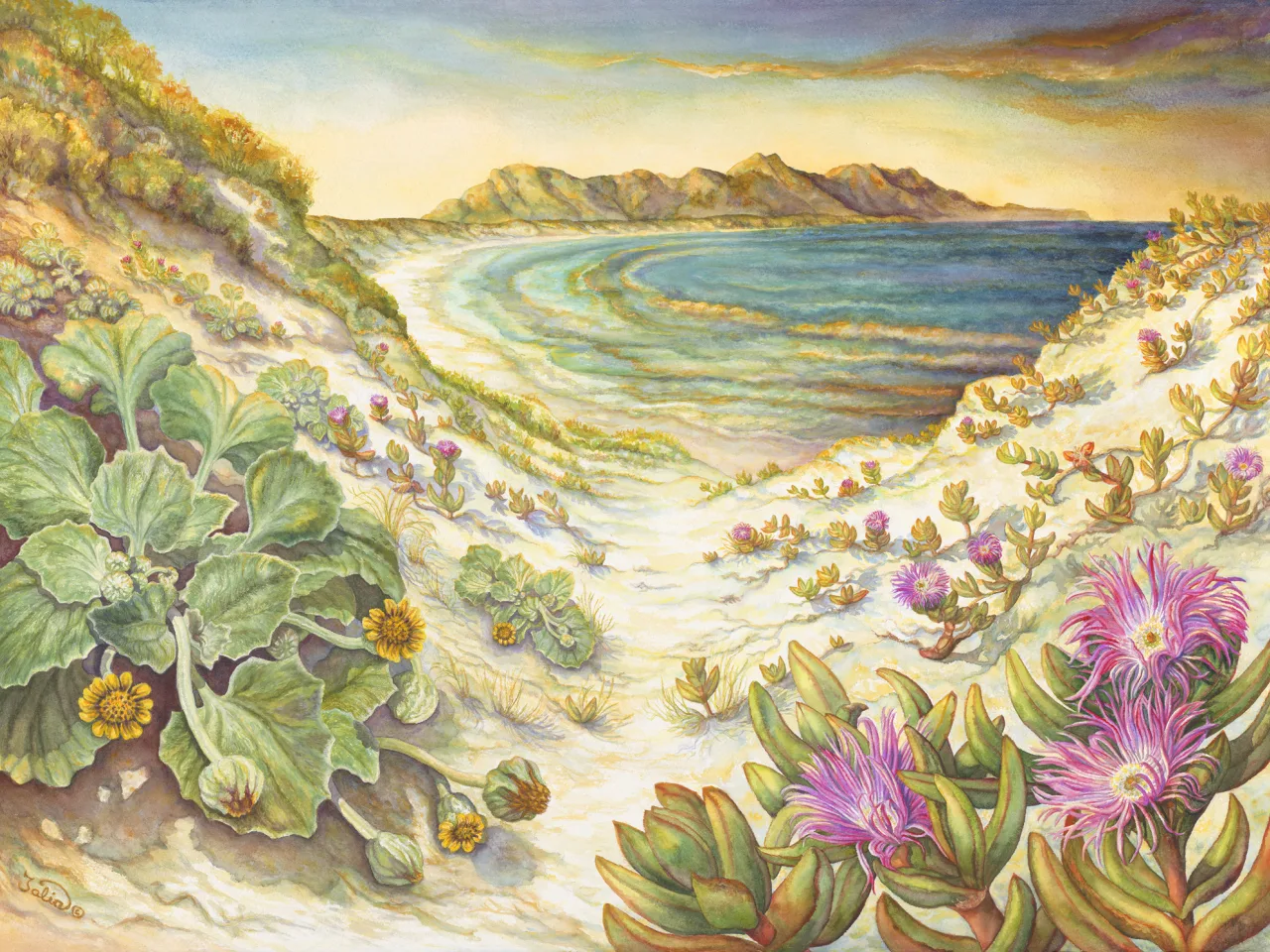Artwork 15 Spirals, Spikes, and Crescent Cones
Section 12
More Southern Conifers—The Araucarians
- 1. Araucaria bidwillii (bunya pine)
Artwork 15
Buy a print
Limited edition giclee archival quality print on 310 gsm Ilford cotton rag (from an original work in watercolour on watercolour paper, 76 cm high x 56 cm wide)
from the artist
Having learnt that ancient trees from the “age of the dinosaurs” had been preserved in their natural state in the Bunya Mountains National Park, we travelled there via Kingaroy in south-eastern Queensland in the mid-1990s. In a golden misty morning, we gazed up at branches which spiralled around a tall straight scaly trunk, like the spokes of a wheel, totally bare of leaves near the trunk, and decorated with spirals of spiky leaves near the branch ends. The lower branches drooped toward the ground, bare sections covered with yellow-green mosses and fungi. They are like no other living trees.
In this artwork the radiating branches of a bunya tree are drawn spiralling upwards, as they appear to someone standing beneath the tree and gazing upwards toward the apex. A lower branch, with leaves and branching stems clustered along it, is in the foreground. Narrow finger-like male cones up to 20 cm long appear near the ends of stems in September–October. They curve softly into crescent shapes as they mature. Many male cones drop to the ground below, some with pollen intact, and can be readily found amongst the leaf litter. They are made up of numerous small scales which conceal the pollen cells, and these scales are also spirally arranged, like the leaves on the stems, and the branches themselves, radiating around the trunk. Some male cones release their pollen grains to the prevailing winds before dropping, and these grains may be carried upwards to fertilise clusters of female scales with ovules, growing on higher branches. Some of these develop into large football-sized female cones, usually quite high in the tree, and they can be very hazardous to unwary wanderers when they ripen and drop.
Leaves are sharply pointed, and range in size from about 2–6 cm in length, by 5–10 mm wide. As I soon discovered, they are very complex to draw, as every leaf on a branch is at a different angle from its neighbour in the row—and there are five spiralling rows!




